
ARTICLE OVERVIEW: Best National Parks to Visit in July
The best national parks to visit in July overlap with summer vacations across America and the height of cruise season to Alaska. We want to help you find the perfect mix of national parks in summer, whether you’re traveling with kids, as a couple, or with friends.
I’m approaching this list a bit differently because, obviously, July makes a great time to visit Alaska. Wasting eight spaces in Top 15 Best National Parks in July list didn’t seem fair – especially if you know you aren’t going to Alaska. So, I’m going to go through the top 15 parks outside Alaska and then dip our toes into the tundra and glaciers of the Last Frontier.
The team here at More Than Just Parks loves summer travel—the warm weather, the late nights under the stars, and the terrain that opens up after the snowy parts melt away. We cater to everyone from peak baggers to first-time parents heading to a crowded park.
Treat this list as a menu, not a countdown. No best park in July exists to meet all the requirements of nice weather, low crowds, kid-friendly, array of activities, and costs.

TABLE OF CONTENTS: Best National Parks to Visit in July
Table of contents: Best National Parks to Visit in July
- 5 Quick Things to Consider for National Park Summer Trips
- Questions to Ask Yourself Before a National Park Summer Trip
- Top 15 National Parks in July
- 15. Indiana Dunes National Park
- 14. Lassen Volcanic National Park
- 13. Great Basin National Park
- 12. Wind Cave National Park
- 11. Redwood National Park
- 10. Black Canyon of the Gunnison
- 9. Theodore Roosevelt National Park
- 8. Mt. Rainier National Park
- 7. Kings Canyon National Park
- 6. Glacier National Park
- 5. Olympic National Park
- 4. Grand Teton National Park
- 3. Bryce Canyon National Park in July
- 2. Crater Lake National Park
- 1. North Cascades National Park
- Summer in Alaska: National Park Trips
- Alaska in July: Park By Park
- List of Best National Parks to Visit in July
- Map of Best National Parks to Visit in July
- Pin 15 Best National Parks in July
- Helpful Related Links
5 Quick Things to Consider for National Park Summer Trips
- Ideally, purchase an America the Beautiful interagency pass. This will allow the pass holder plus a carload of adults and children access to parks with entrance fees. It will also cover more than 2,000 other public lands through BLM, Forest Service, and U.S. Fish & Wildlife.
- Check your park of choice for reservation or timed entry requirements. This applies to entering the park and campsites, as well as popular trails like Angels Landing (Zion), Half Dome (Yosemite), and Old Rag (Shenandoah).
- Not all parks allow you to carry bear spray. Generally, the line of demarcation comes with the presence of grizzly bears vs. black bears. For example, Yosemite National Park bans bear spray, while Yellowstone National Park recommends it and even sells it at the park.
- The monsoon season runs from late June through September. This seasonal flow of moisture builds potentially dangerous storms in the afternoon across Arizona, southern Utah, and New Mexico. Plan activities as early in the day as possible or larger in the evening after the storms.
- Follow the 7 Principles of Leave No Trace. This guidance is important year-round, but during the peak summer travel season, every step becomes that much more important.
MORE: You could be missing out on free National Park access

Questions to Ask Yourself Before a National Park Summer Trip
I added this section at the last minute after reading through a bunch of sub-Reddits for National Parks in July. Park visitors come with a lot of different expectations. For example, I love hot weather. Give me 100° with low humidity before ever making the humidity more than 50%.
I gleaned the following things from talking with our followers and first-hand experience.
- CROWDS: What tolerance do you have for crowds? Can you handle waiting in lines or planning a trip 3-6 months out? If you look at our Most Visited National Park list, you can see which parks will have the largest crowds in summer. Places like Zion, the Grand Canyon, and Yellowstone will be packed.
- WAKEUP CALL: Can you handle getting up at 4am to 6am to beat the crowds to your favorite trail or attraction? If not, can you wait until after 3pm to 4pm to enter? If not, choose a less-visited park on the list.
- TRAILS: Several of the best national parks in July are pure wilderness. Few to no trails and a lack of roads can deter some people from beautiful parks.
- WEATHER: Do you have experience hiking in hot weather, with temperatures in the 90s or possibly triple digits? Can you balance water and electrolytes to avoid dehydration without overconsuming? Also, can you pivot plans if thunderstorms are in the forecast?
- ALTITUDE: Some of the parks on this list come with high altitudes, and if you live closer to sea level, you’ll need an extra day or two to let your body adjust. The CDC offers this guidance to help adapt.
Figuring out your national park trip in July dealbreakers makes narrowing down the process much easier.
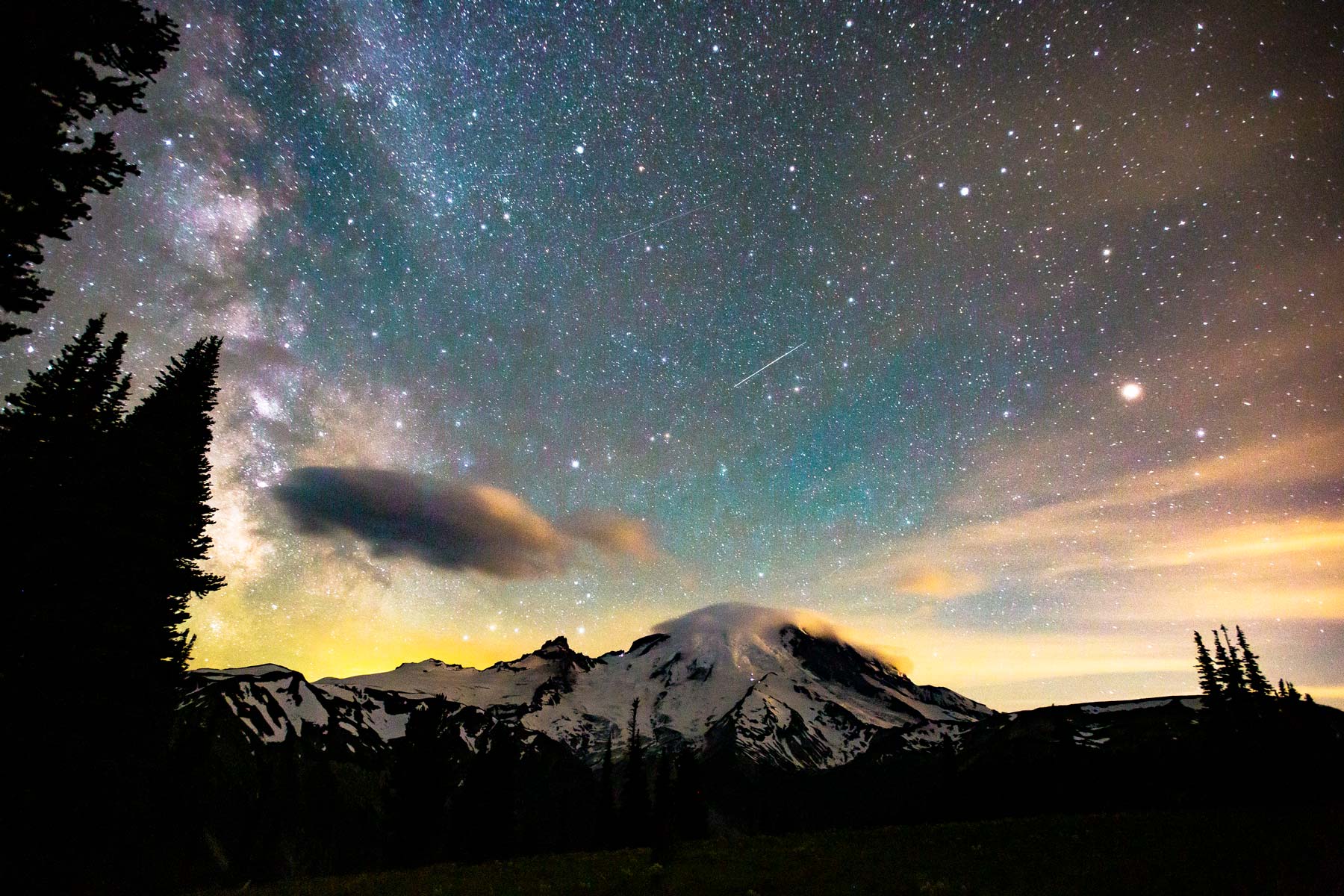
Top 15 National Parks in July
As noted above, we’re looking for a good balance of a great summer experience at the best national parks in July without putting you in wall-to-wall traffic as much as possible. Some parks are just worth it. While I’ll provide my tips for avoiding crowds (as I live my life to avoid crowds in any way possible), I don’t have a magic hat with answers. Expect crowds on holiday weekends or any summer weekend, regardless of where you visit.
15. Indiana Dunes National Park
- Location: Indiana
- Weather: Average high: 82°F, Average low: 63°F
- Sunrise & Sunset Times: Sunrise: 6:15am, Sunset 8:30pm. About 9 days of rain with 3″ of rainfall.
- Crowds: Medium/High
- Resources: Facts | Things to Do | Where to Stay | Park Conditions
Indiana Dunes National Park stands as one of the best national parks to visit in July because where else in the Midwest can you get access to such a pristine, expansive beach? Yeah, you’ll face crowds. It’s the most visited month of the year. However, crowds can spread out between Indiana Dunes State Park, too.
In July, Indiana Dunes National Park experiences peak bloom for many of its wildflowers, including the dog rose, purple bergamot, and starry campion. This creates a vibrant display of colors across the dunes and meadows across Cowles Bog Trail and West Beach.
Additionally, July marks the height of bird activity, with numerous species nesting and feeding in the park’s diverse habitats, such as the Great Marsh Trail.
Moreover, July offers ideal weather conditions for beachgoers along 15 miles of shoreline.
Tips to Avoid Summer Crowds at Indiana Dunes
You can visit West Beach to all but guarantee a parking spot, a beach that also leads to several trails and massive dunes. Also, while some parts require a pre-dawn wakeup call to skip the biggest crowds, just arrive here before 9:00am.
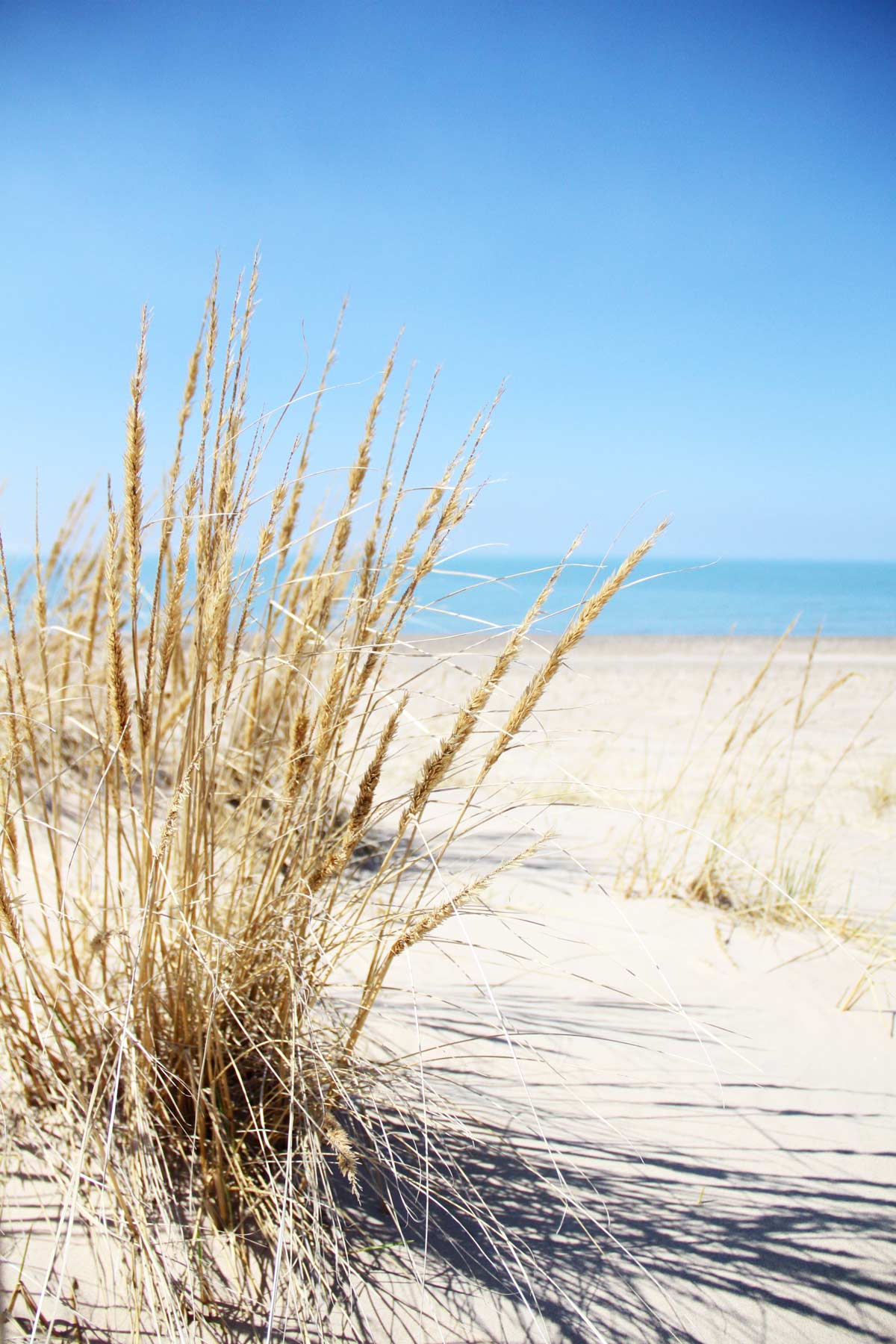
14. Lassen Volcanic National Park
- Location: California
- Weather: Average high temperatures in July range from 65°F to 80°F. Average low temperatures in July range from 40°F to 50°F. Minimal rainfall over 1-2 days of precipitation in July.
- Sunrise & Sunset Times: Sunrise: 5:45 AM, Sunset: 8:30 PM
- Crowds: Medium
- Resources: Things to Do | Facts | Map | Guidebook | Where to Stay
Lassen Volcanic National Park makes the list of best national parks to visit in July because you can actually visit the ENTIRE park! July ranks as the busiest month at the park, but Yosemite sees in a summer month what Lassen Volcanic sees in a year. The last of the snow melts (usually) by July, and temperatures are just perfect.
Plus, you get the hydrothermal features of Yellowstone without any of the crowds. The Bumpass Hell thermal basin only opens in the summer and fall, and I can attest that it’s a sensory superload. Waterfalls, wildflowers, mountain peaks, volcano remnants, exquisitely light blue pools, and what’s that smell?
The Big Boiler’s water temperatures peak above 320°F, but boardwalks guide you safely around – like Yellowstone – without the crowds. Did I say that already?
Yet other regions of the park bring crystal waters in Juniper Lake, the shadow of the youngest park volcano, and pristine night skies. From parking pullouts to campsites to Lassen Peak Trail, you can’t miss this sparkly slice of darkness.


13. Great Basin National Park
- Location: Nevada
- Weather (Lower Elevations): 85-90°F for highs, with lows down to 50-55°F.
- Weather (Above 10,000 feet): 65-70°F for highs, with lows around 35-40°F.
- Sunrise & Sunset Times: Sunrise 5:45am. Sunset 8:45pm.
- Crowds: Low to Medium
- Resources: Map | Guide | Park Conditions
Great Basin National Park in eastern Nevada rarely gets more than 25,000 people a month, and that includes the peak summer season. For that reason alone, it could be one of the best national parks to visit in July, but it goes much deeper (and higher) than that.
Wheeler Peak stands more than 13,000 feet tall, making it the sixth-highest peak in a national park in the contiguous United States. In fact, Yosemite’s Mount Lyell is only 50 feet taller, and Wheeler Peak beats Yellowstone’s Eagle Peak by 1,700 feet.
Second, you have the Lehman Caves to explore on ranger-guided tours AND the wild caving opportunities at dozens of caves throughout the park, from beginner to expert level caving options.
Third, wildflowers peak in summer at Great Basin National Park, and plenty of trails or scenic drives get you to them. Baker Creek Trail is among my favorite wildflower spots in the country, with nearly 2,000 feet of altitude and wildflower adjustments.
Finally, the amazing night skies of the International Dark Sky Park, viewed from the Astronomy Amphitheater, the nearby archaeological site, or a campsite, make it worth staying up late.
STARGAZING ROAD TRIP: While Death Valley is super hot in July, if you start there in the morning and drive the Park to Park in the Dark route to Great Basin, you’ll take one of the best road trips in the country.
12. Wind Cave National Park
- Location: South Dakota
- Weather: Highs mid-70s to mid-80s. Lows mid-50s to low 60s. Afternoon thunderstorms are possible to likely.
- Sunrise & Sunset Times: Sunrise: 5:30-6:00 AM. Sunset: 8:30-9:00 PM.
- Crowds: Medium
- Resources: Things To Do | Guidebook | Park Facts | Park Conditions
In the summer, Wind Cave National Park offers a plethora of delights above ground. Its expansive prairies burst with vibrant wildflowers, painting a picturesque scene against the rolling hills.
Hiking trails beckon adventurers to explore the park’s diverse landscapes, from the rugged beauty of the Black Hills to the tranquil serenity of its ponderosa pine forests. In addition, off-trail hiking options prove rare in the national world ecosystem, and here, you can blaze your path (without leaving a trace, of course).
Wildlife sightings are abundant, with opportunities to spot bison, elk, pronghorn, and various bird species.
Underground, a massive cave system unfolds and stands as one of the oldest on Earth.
Other South Dakota Public Lands
Another great aspect of Wind Cave National Park is the conglomeration of public lands nearby.
- Jewel Cave National Monument
- Mount Rushmore National Memorial
- Black Hill National Forest
- Badlands National Park
HEADS UP: Wind Cave (the cave) is getting a new elevator in the summer of 2024, which means no entrance to the cave is allowed. Work should finish by October, making Wind Cave one of the best national parks to visit in October, too. Jewel Cave makes a great backup plan if you’re determined to get in a cave and it’s just 30 minutes away.
11. Redwood National Park
- Location: Calfornia
- Weather: Highs in the mid-60s to low 70s. Look for lows in the mid-40s to low 50s—minimal rainfall.
- Sunrise & Sunset Times: Sunrise: 5:45-6:00 AM. Sunset: 8:45-9:00 PM
- Crowds:
- Resources: Things to Do | Exclusive Expert Guide | Map | Guidebook | Where to Stay
If only Indiana Dunes National and State Parks could take a page out of this book at Redwoods National Park. When you visit the home of the tallest trees on Earth, you don’t pay an entry fee, and you get access to Jedediah Smith, Del Norte Coast, and Prairie Creek Redwoods state parks if you have the federal interagency pass. Some day-use areas and campsites could have nominal fees.
Redwood National Park makes the list of best national parks in July due to the mild weather mixed with low rainfall. From the coastline through the fascinating Fern Cayon to the towering tree forests, you get the beach and wilderness among one of the most unique landscapes worldwide.
As an avid paddler, my favorite part of July at Redwoods is the kayak tours down the National Wild and Scenic Smith River. The currents top out at Class II, so don’t worry about the ride being too dangerous.
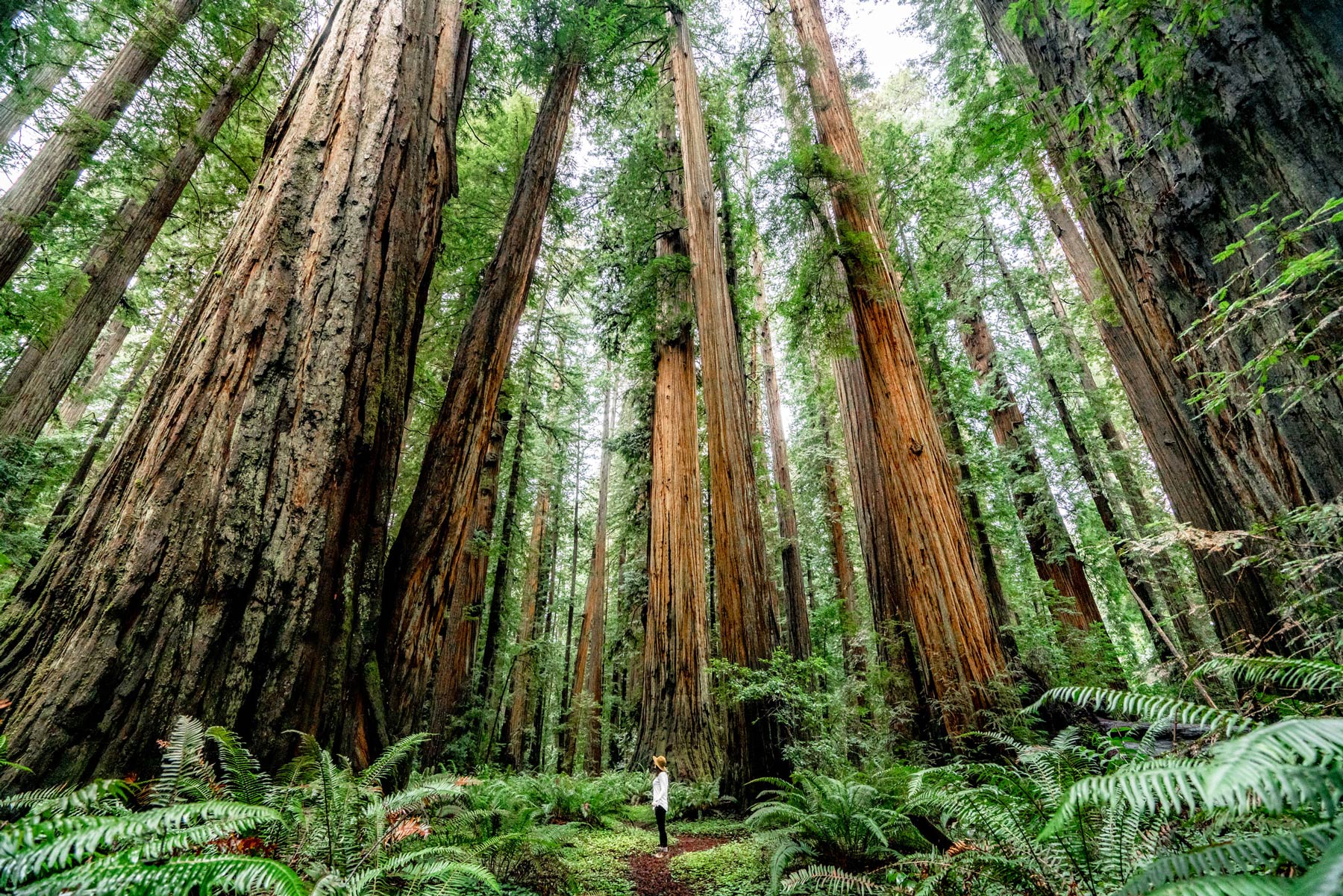
10. Black Canyon of the Gunnison
- Location: Colorado
- Weather: Highs around 90° F with lows in the upper 50s. Minimal rainfall in July, with precipitation levels generally below one inch for the month. Afternoon thunderstorms are possible.
- Sunrise & Sunset Times: Sunrise: Between 5:45 AM and 6:15 AM. Sunset: Between 8:30 PM and 9:00 PM.
- Crowds: Medium to High
- Resources: Things to Do | Facts | Map | Guidebook | Where to Stay
A huge canyon, a robust river, and starry night skies – sounds like the Grand Canyon, but Black Canyon of the Gunnison brings the charm without the crowds. That’s why it’s one of the best national parks to visit in July.
Divided into North and South Rim sections, Black Canyon of the Gunnison offers diverse activities such as hiking, camping, wildlife viewing, and scenic drives. The park’s July appeal lies in its pleasant weather, ideal for outdoor adventures. Plus, all sections of the park are open, something you can’t get between November and April.
Three scenic roads, including the nailbiting East Portal Road, include more than a dozen overlooks of this steep canyon. Family-friendly trails await at both rims, but the extreme adventurer can enter the wilderness and take one of six intense scrambling routes to the river that drop 2,000 feet in less than a mile.
Even the dark skies at night bring a level of pristine beauty comparable with the dark levels at Arches National Park, yet it’s about 10° cooler here.
NOTE: Black Canyon of the Gunnison’s South Rim is undergoing extensive roadwork on the South Rim. Expect increased traffic. By the summer of 2026, all park roads will be resurfaced and fresh.

9. Theodore Roosevelt National Park
- Location: North Dakota
- Weather: Highs: 80°F to 90°F. Lows: 50°F to 60°F. Expect 6-8 days of rain with 1-2 inches total.
- Sunrise & Sunset Times: Sunrise: 5:45 AM to 6:15 AM. Sunset: 9:00 PM and 9:30 PM.
- Crowds:
- Resources: Expert Guide | Things to Do | Park Film by More Than Just Parks | Map | Guide | Where to Stay | Another Hotel Option
Three sections of one park named after the trailblazing president who shaped the legacy of national parks await visitors in North Dakota. July is the busiest month at this park, but plenty of room to explore means you won’t sit in traffic or feel crowded on the trails.
Even if you’re just driving through, you get nearly 50 miles of scenic drive with jaw-dropping vistas.
“I never would have been President if it had not been for my experiences in North Dakota.”
–President Theodore Roosevelt
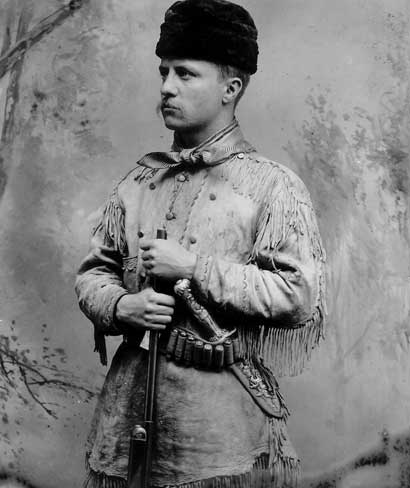
The North Unit features rolling prairies, scenic drives, and opportunities for wildlife viewing, including bison and prairie dogs. The South Unit boasts colorful badlands formations, extensive hiking trails, and the historic Maltese Cross Cabin, once owned by Theodore Roosevelt.
The remote Elkhorn Ranch Unit preserves the site where Roosevelt lived and found solace in the wilderness. Each section offers unique landscapes, recreational activities, and a glimpse into the region’s natural and cultural history.
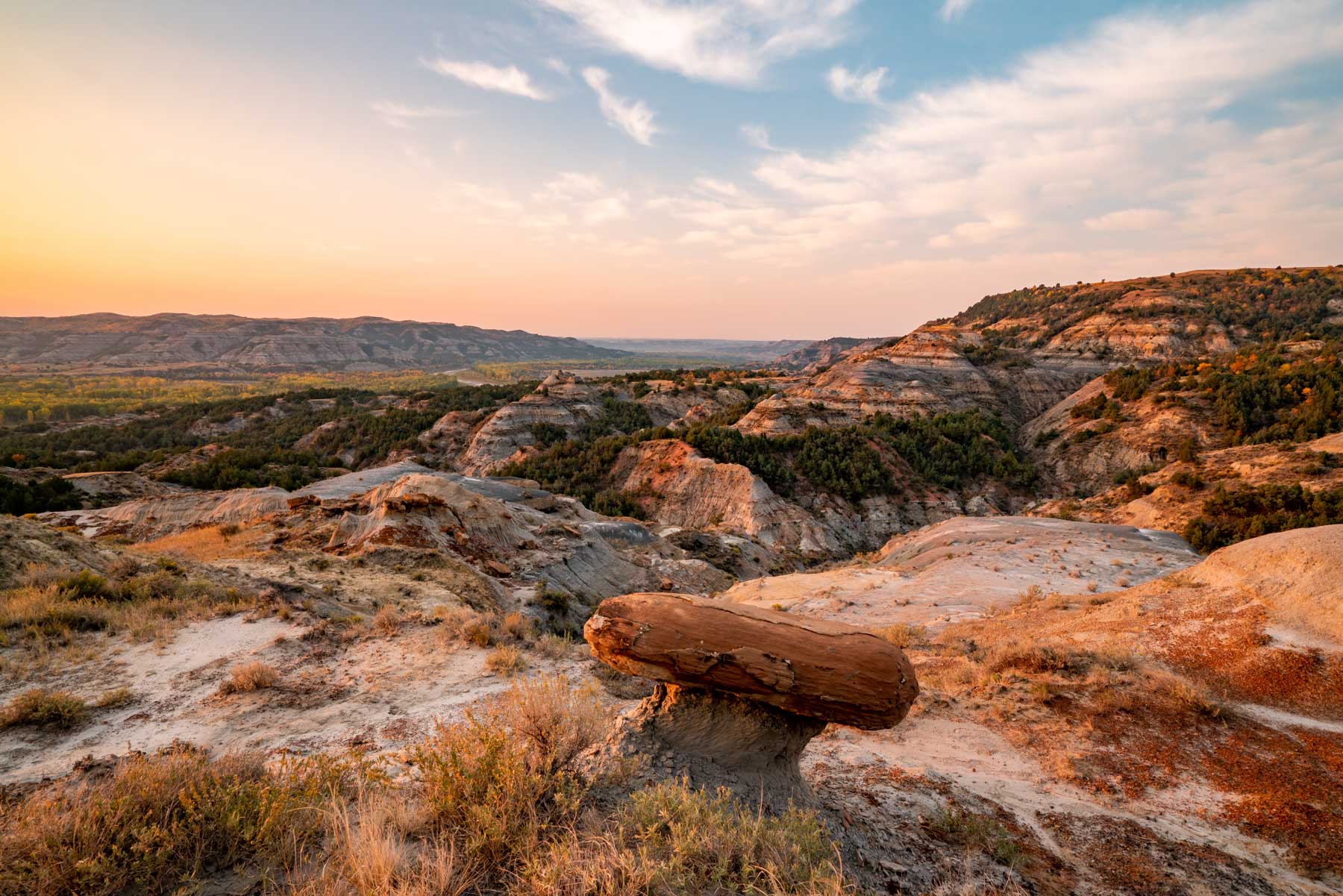
8. Mt. Rainier National Park
- Location: Washington
- Weather: Longmire gets highs near 75° and lows in the 40s. Paradise tops out at 65° on average, with mid-40s for lows.
- Sunrise & Sunset Times: Sunrise: 5:30 AM to 5:45 AM. Sunset: 8:45 PM and 9:00 PM. Average 5-7 days of rain combining to 1-2 inches.
- Crowds:
- Resources: Map | Guidebook | Hikes | Things to Do | Paradise | Facts | Where to Stay
To enjoy the full extent of Mount Rainier National Park’s offerings, you’ll need to deal with the crowds. Considering how amazing the sunrise is at places like Fremont Lookout Trail, getting up early before the timed reservations start (6am) is the best way to avoid traffic.
Heading to Mowich Lake is another great way to avoid traffic, though it can be closed through mid-July. When the Tolmie Peak Lookout is open, the sunset is epic, but it’s also a helluva nice sunrise if you want to skip the Fremont Lookout Trail crowds.
Some of the less crowded trails at Mt. Rainer National Park in summer include:
- Reflection Lake to Narada Falls
- Sunrise Rim Trail
- Comet Falls (Hike PAST the falls to get fewer crowds)
The fact of the matter is that the Sunrise corridor is only open about three months of the year. Crowds are going to swarm. Get there early or score a backcountry permit so you can explore the paths less traveled.

7. Kings Canyon National Park
- Location: California National Park
- Weather: Highs around Around 85°F. Lows around 50°F. 1-2 Days of Rain.
- Sunrise & Sunset Times: Sunrise around 5:30 AM. Sunset around 8:30 PM
- Crowds: High
- Resources: Things to Do | Facts | Map | Guide | Park Conditions
Kings Canyon National Park is one of the best national parks to visit in July because you also get access to Sequoia National Park. In addition, three national forests surround the parks, including the highest point in the United States, lower 48 – Mount Whitney.
John Muir once described Kings Canyon as a park to rival Yosemite. In fact, one summer road trip option is to take the Majestic Mountain Loop from Yosemite to Sequoia to Kings Canyon so you can compare for yourself!
Between Kings Canyon and Sequoia, you get the largest trees on earth, the deepest canyon in the country (yes, deeper than the Grand Canyon by 2,000 feet), and granite domes like Big Baldy. Keep in mind that no reservations are needed for domes or entrances here.
Rock climbers love the options in Kings Canyon, as it gives a Yosemite experience without the El Capitan crowds.
To make the most of your time, stay at a lodge or campsite within the park or nearby forests. The parks are remote, and not much lodging is nearby outside the park. The entrances are where the traffic bottlenecks happen.

6. Glacier National Park
- Location: Montana
- Weather: Highs around 75°F. Lows around 45°F.
- Sunrise & Sunset Times: Expect the sun to rise around 5:30 AM and set around 9:15 PM.
- Crowds: High
- Resources: Things to Do | Best Hikes | Suggested Itinerary | Facts | Map | Guide | Where to Stay
One of the best national parks to visit in July is also one of the busiest months at Glacier National Park, a fan favorite. In fact, the average visitor spends 33 hours here in July. The scenery is second to none, and even the crowds can’t dampen this amazing experience.
While many visitors flock to popular spots like Going-to-the-Sun Road and Logan Pass, consider exploring less frequented areas of the park, such as the North Fork region or the Two Medicine Valley. These areas offer beautiful scenery and hiking opportunities with fewer crowds.
Vehicle reservations go into effect in May or July 1 and last through September. That means you can either roll the dice on getting an entry in advance or the day before, OR you can arrive before 6:00 am or after 3:00pm. In my experience, before 9am you might get trails like Grinnell Glacier to yourself on the way up.
Some of the less crowded trails at Glacier National Park in July include:
- Baring Falls
- Cracker Lake
- Huckleberry Lookout
The short season for Going-to-the-Sun Road and most park sections make it impossible to avoid all the crowds during the warmest time of year.
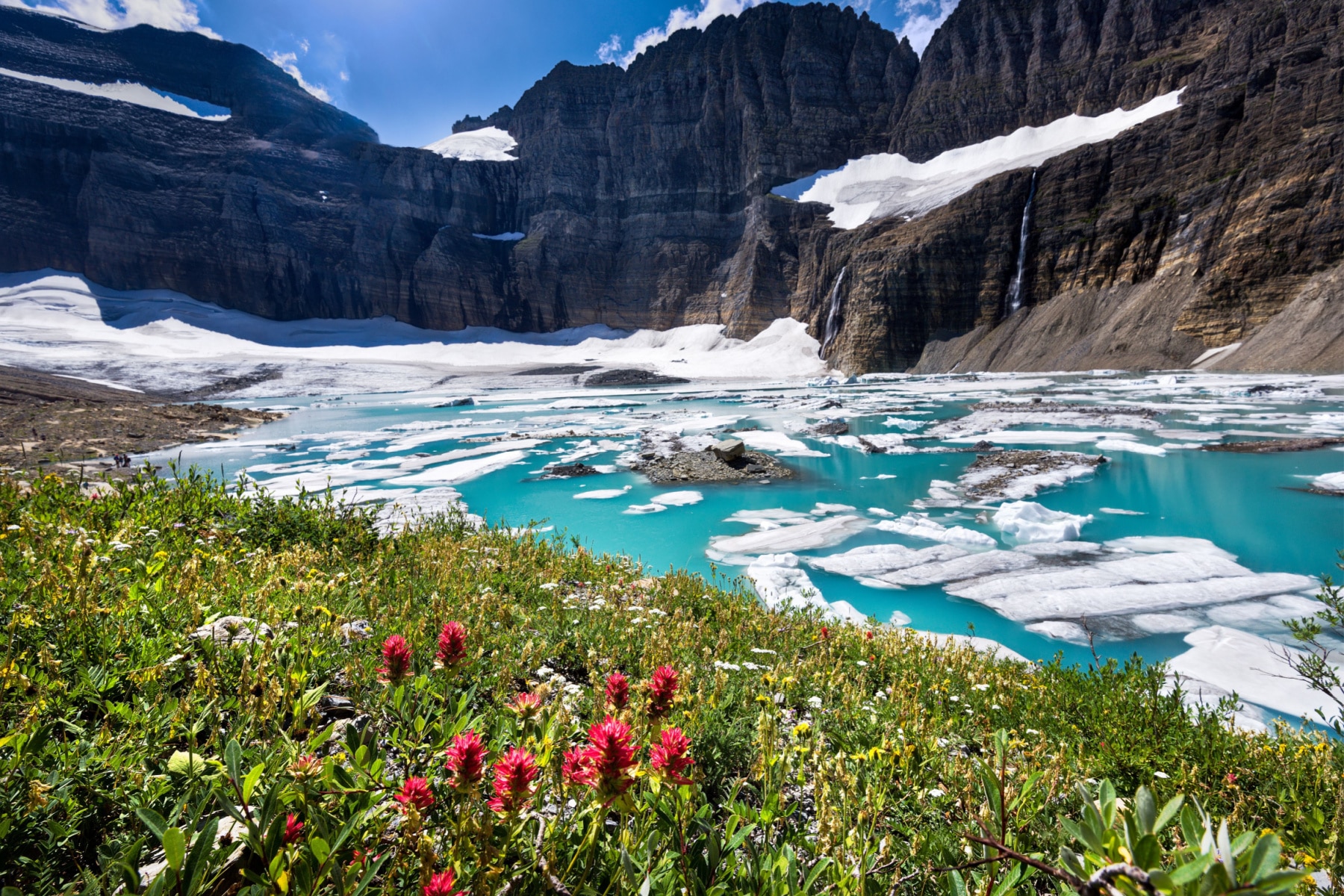
5. Olympic National Park
- Location: Washington
- Weather: Highs around 70°F. Lows around 50°F. Typically 4-6 days of rain.
- Sunrise & Sunset Times: Sunrise 5:30 AM. Sunset 9:00 PM.
- Crowds: High
- Resources: Guide | Map | Guidebook | Things to Do | Hikes | Where to Stay
Escape to Olympic National Park as one of the best national parks to visit in July for an unrivaled adventure from the temperate rainforest to snow-capped peaks. Traverse lush rainforests, witness cascading waterfalls, and bask in the tranquility of alpine meadows. Discover hidden coves along the rugged coastline, or embark on a scenic drive along Lake Crescent.
Immerse yourself in nature’s symphony while avoiding peak hours at popular spots like Ruby Beach or the Hoh Rainforest. July in Olympic promises unforgettable encounters with nature’s wonders. In fact, Ruby Beach is ranked as one of the “most incredible seaside spots” in the world.
Yeah, July is busy at Olympic, but also not as busy as August. You still need to get to Hurricane Ridge or the Hoh Rain Forest by 9am to find parking. Two of the least crowded spots are Heart O’ the Hills and Deer Park.
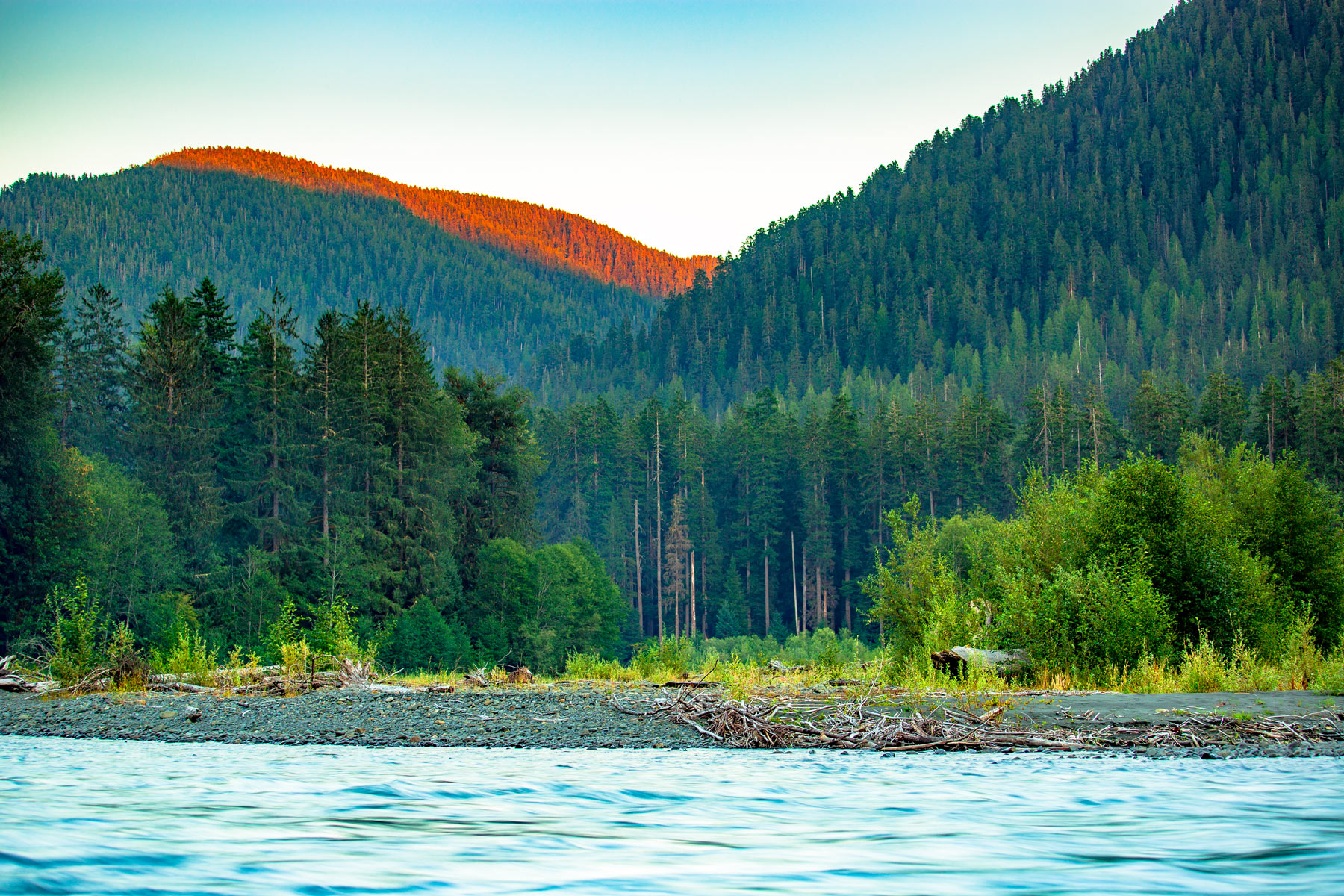
4. Grand Teton National Park
- Location: Wyoming
- Weather: Highs 75°F to 85°F. Lows 40°F to 50°F. 5 to 8 rainy days during the month, with an average rainfall of 1 to 2 inches.
- Sunrise & Sunset Times: Sunrise: 5:45 AM to 6:00 AM. Sunset: 8:45 PM to 9:00 PM.
- Crowds: High
- Resources: Hikes | Ultimate Guide | Things to Do | The Best Maps | 15 Amazing Facts | Oxbow Bend | Phelps Lake | Schwabacher Landing | Snake River Overlook
Grand Teton National Park stands as one of the best national parks to visit in July for a more serene and unspoiled wilderness experience compared to its bustling neighbor, Yellowstone.
In July, the Grand Tetons and its jagged peaks, pristine lakes, and verdant valleys provide unparalleled opportunities for hiking, wildlife viewing, and photography.
Unlike Yellowstone’s geothermal wonders, Grand Teton showcases dramatic mountain vistas reflected in crystal-clear lakes, making it a haven for outdoor enthusiasts seeking solace in nature’s raw beauty. Grand Teton allows you to get closer to nature than just watching it from a distance.
Grand Teton’s smaller size means more time on the trails and less time in traffic. Plus, rafting the Snake River is one of my core memories as a child. I’ve rafted dozens of rivers since, but the Snake River will always be my favorite.
In addition, Yellowstone’s south entrance is one of the least used in summer. That means doing both parks in one trip will save you time as well. We recommend getting away from all the crowds and visiting Bridger Teton National Forest next door.
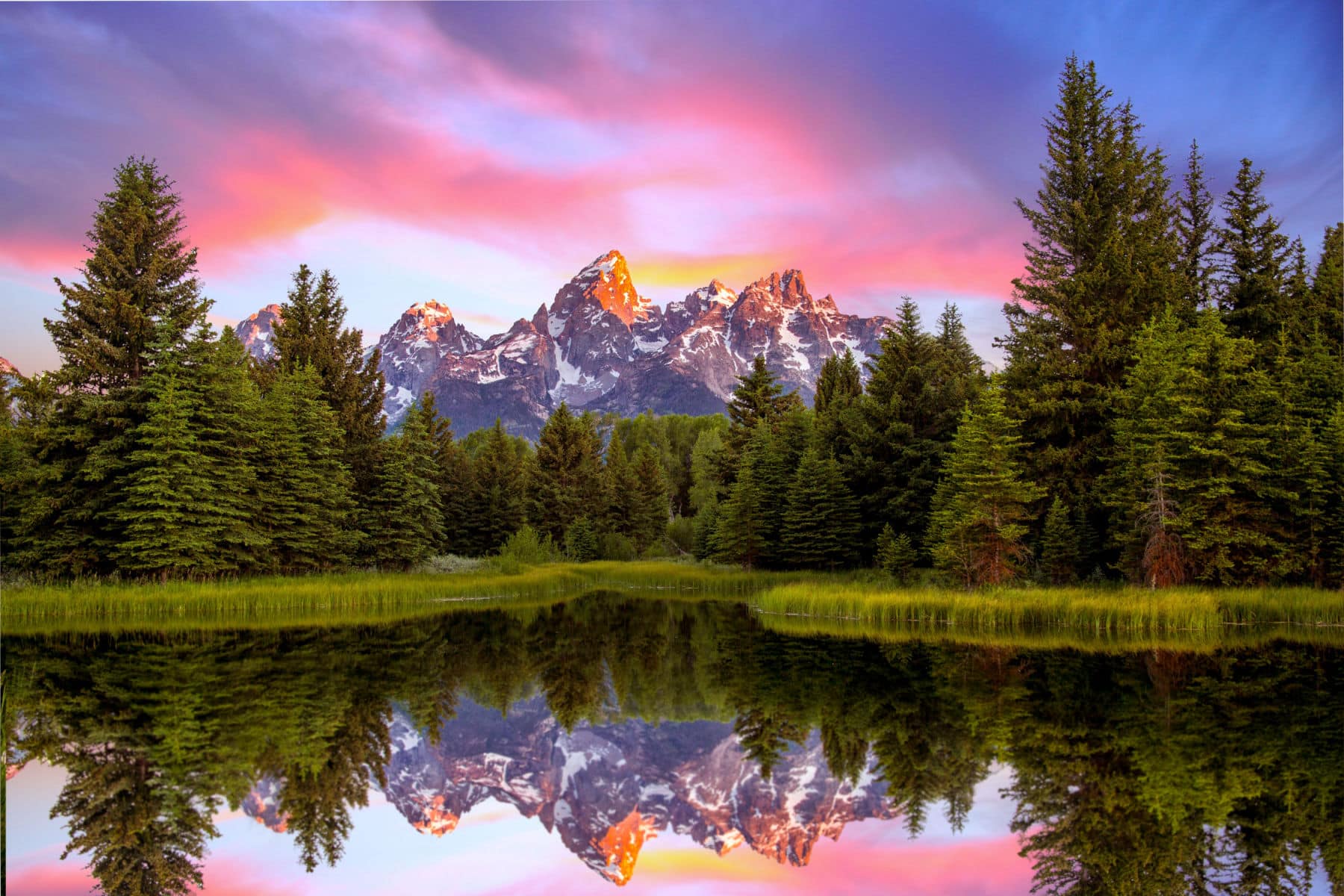
3. Bryce Canyon National Park in July
- Location: Utah
- Weather: Highs around 80° F. Lows around 47° F.
- Sunrise & Sunset Times: Sunrise around 5:45 AM to 6:00 AM. Sunset 8:45 PM to 9:00 PM.
- Crowds: High
- Resources: Things to Do | Facts | Utah Roadtrip | Utah’s Parks in Summer | Map | Guide | Where to Stay
Bryce Canyon’s higher elevations make for more comfortable days for those who want the best national parks in July to be in Utah. Home of the hoodoos, Bryce Canyon offers great trails like the Navajo Loop Trail and scenic views like Sunrise Point. Plus, Bryce Canyon National Park avoids many of the steep cliffs that give you vertigo at the other parks.
In addition, July brings the Geology Festival to the park while still getting a chance to explore the night skies at this International Dark Sky Park.
While Bryce Canyon National Park ranks as my all-time favorite national park, it’s also the coolest one of the Mighty 5 in July. Too early in spring and Bryce Canyon can be covered in snow. Waiting until fall means nearly freezing temperatures at night.
Southern Utah Park Temperatures in July
| National Park | Average High (°F) | Average Low (°F) | Elevation Range (ft) |
|---|---|---|---|
| Zion | 95°F | 62°F | 3,666 – 8,726 feet |
| Bryce Canyon | 80°F | 47°F | 6,620 – 9,115 feet |
| Arches | 96°F | 65°F | 4,085 – 5,653 feet |
| Canyonlands | 94°F | 64°F | 3,700 – 7,200 feet |
| Capitol Reef | 90°F | 59°F | 3,600 – 9,000 feet |
Another reason Bryce Canyon National Park is one of the best national parks in July is that it’s close to all the others. The (less crowded) east entrance to Zion National Park is less than 80 miles away, and Scenic Byway 12 through Grand Staircase Escalante National Monument is right outside the park.
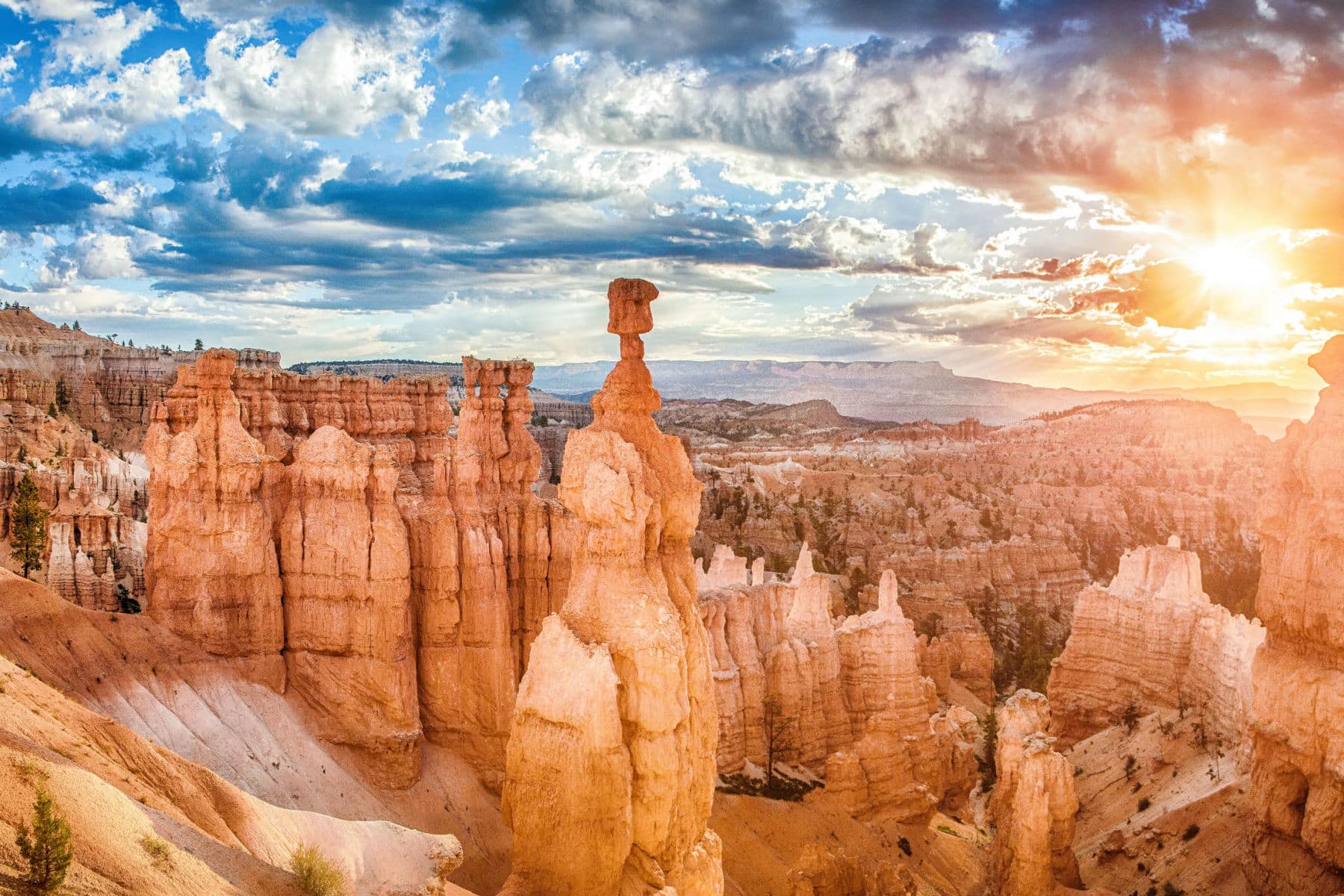
2. Crater Lake National Park
- Location: Oregon
- Weather: Highs near 66-74°F. Lows down to 40-45°F.
- Sunrise & Sunset Times: Sunrise: 5:30-5:45 AM. Sunset: 8:30-9:00 PM. 1-2 days of rain.
- Crowds: Peak
- Resources: Things to Do | Facts | Map | Guidebook
When you want to experience the most of Crater Lake National Park, you get about three months of the year to do so before the seemingly eternal winter sets in and closes off sections of the park.
Experience the awe-inspiring wonder of Crater Lake, a stunningly blue gem nestled in the caldera of an ancient volcano. Full access makes this one of the best national parks to visit in July. August crowds are about the same size.
Part of the park is closed until June due to the massive amount of snow that needs to be cleared. Boat cruises also start July 1, with our favorite taking you to Wizard Island. Trolly tours gear up about the same time. The scenic Rim Drive goes around the lake, with 30 overlooks along the way.
TRAVEL TIP: If you don’t stay in the lodging or campgrounds inside the park, plan for a 20-35-mile drive to the park each day.
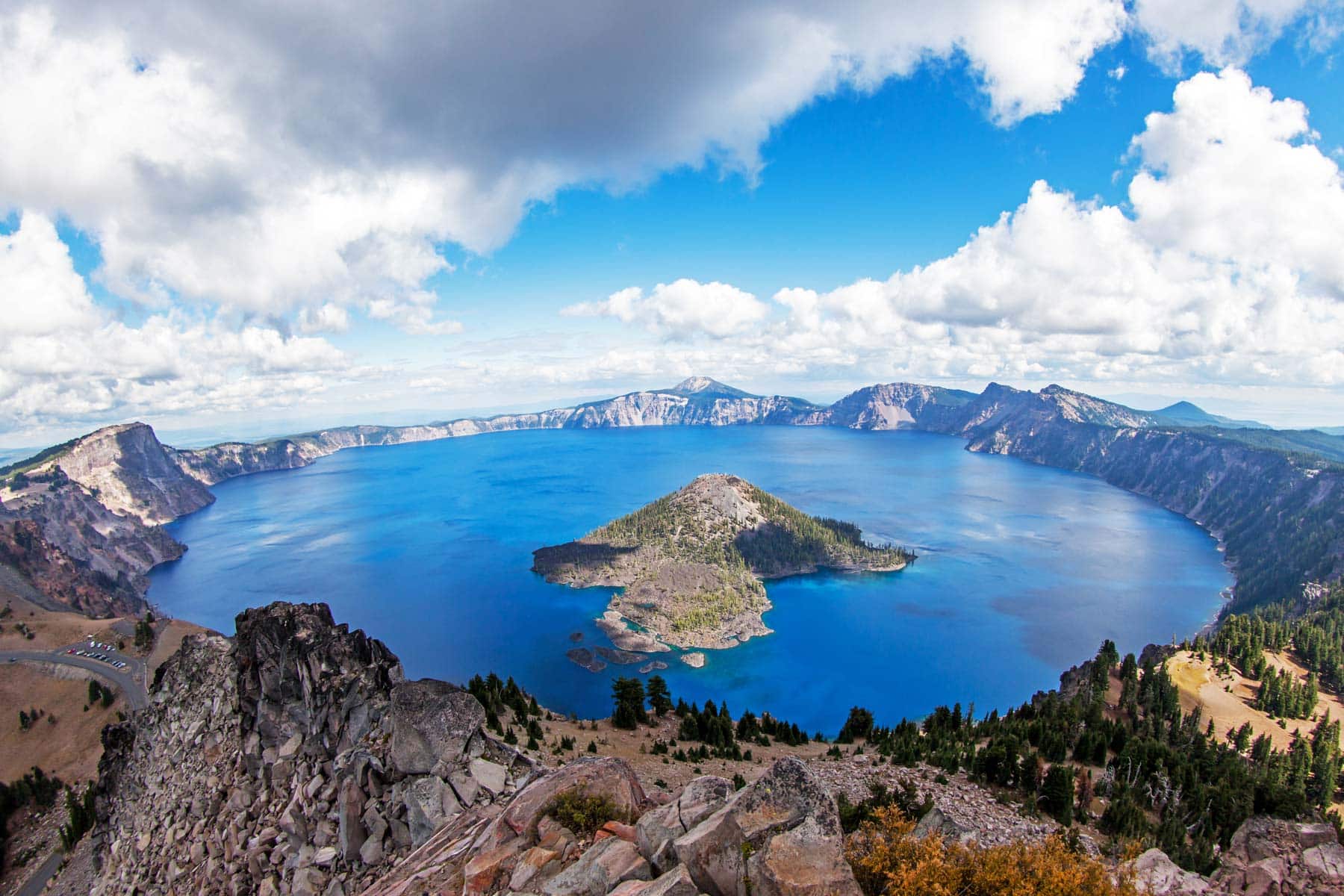
1. North Cascades National Park
- Location: Washington
- Weather: Highs near 70-80°F. Lows around 45-55°F.
- Sunrise & Sunset Times: Sunrise around 5:15-5:30 AM. Sunset around 8:30-9:00 PM.
- Crowds: Low
- Resources: Things to Do | Best Hikes | Facts | Map | Guidebook
North Cascades National Park is misunderstood, but there’s a very good reason it made it to the top of the best national parks to visit in July list. You see, North Cascades National Park COMPLEX covers the park and two national recreation areas, Ross Lake and Lake Chelan. It’s similar to Kings Canyon and Sequoia being under the same management.
Often listed as one of the least visited parks in the United States, there’s more to the story than that. North Cascades National Park is almost entirely wilderness, meaning no roads. Yeah, more people visit the lakes and roads, but those who dare make the trek into the wilderness know the secret to crowd-free national parks in summer beauty is at North Cascades. Full stop.
Boating makes another great way to get around, especially in the Stehkin region. The national recreation areas offer more boating, while the part is filled with 300+ glaciers and brilliant waterfalls.
Campers should know that hardly any other park can even come close to the epic spots available across North Cascades, and certainly none with no crowds around.
Quite frankly, North Cascades National Park Complex is everything a national park in July should be—and despite the visitation of 40,000 or so in 2023, the entire complex saw nearly 1,000,000 people.

Summer in Alaska: National Park Trips
Summer is the best time to visit the Alaska National Parks, seven of which fall among the least visited. Here are a few things to know.
- Approximately 87% of Alaska does not have roads, making it one of the least road-accessible states in the United States.
- Not all parks include designated trails. Places like Gates of the Arctic and Kobuk Valley are open wilderness, and there are no roads leading to them.
- Several park access points come from seaplanes only.
The best Alaska national parks in July also have up to 24 hours of daylight! The only bummer is that they don’t have the potential for the Northern Lights.
Alaska National Parks in Summer Summary
| ark | Average High (°F) | Average Low (°F) | Rainfall/Days of Rain | Hours of Daylight | Roads | Cruise Ship Port | Largest Nearby Town |
|---|---|---|---|---|---|---|---|
| Denali | 66°F | 49°F | 2.6 inches / 12 days | ~20 hours | Yes | Yes | Healy/Fairbanks |
| Katmai | 60°F | 45°F | 2.7 inches / 15 days | ~18 hours | No | No | King Salmon |
| Kobuk Valley | 67°F | 46°F | 0.9 inches / 8 days | ~24 hours | No | No | Kotzebue |
| Kenai Fjords | 60°F | 48°F | 3.4 inches / 19 days | ~18 hours | Yes | Yes | Seward |
| Gates of the Arctic | 65°F | 47°F | 1.4 inches / 10 days | ~24 hours | No | No | Anaktuvuk Pass |
| Lake Clark | 62°F | 48°F | 2.6 inches / 18 days | ~19 hours | No | No | Port Alsworth |
| Wrangell St. Elias | 65°F | 47°F | 2.0 inches / 11 days | ~19 hours | Yes | No | McCarthy |
| Glacier Bay | 59°F | 47°F | 4.0 inches / 22 days | ~18 hours | No | Yes | Gustavus |
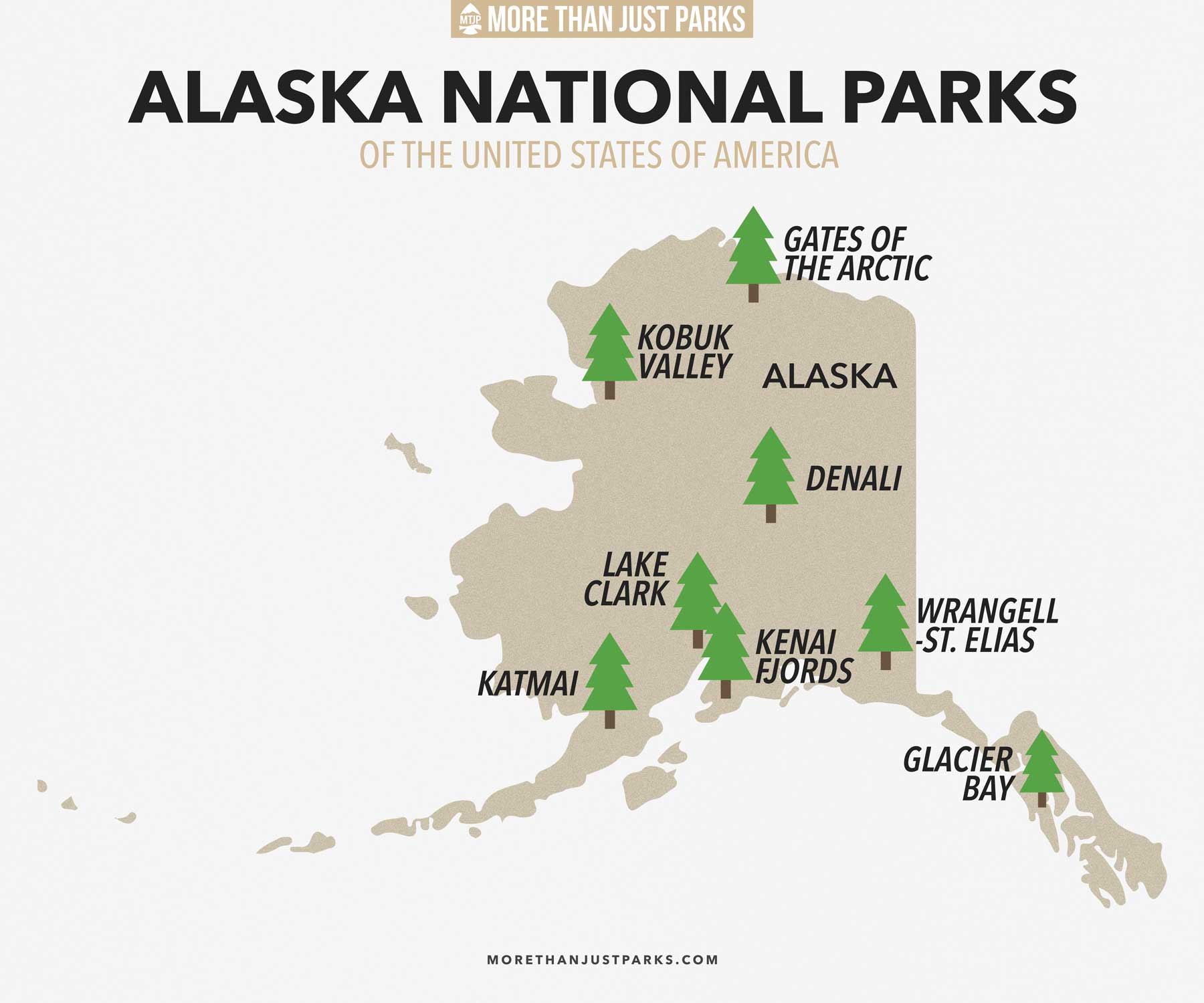
Alaska in July: Park By Park
Even once you settle on visiting Alaska in July, the decisions continue. Much of the right park determination is your physical ability, experience in the wilderness, enjoyment of seaplanes, and willingness to travel long or short distances.
Glacier Bay National Park and Preserve
As the most popular national park in Alaska, Glacier Bay National Park benefits from the cruise ship industry. In fact, 2023 saw the highest visitor count in the park’s history, with more than 703,000 visitors.
There’s a catch, however. Cruise ships stay on the water—they don’t dock. Since the ship passes into the park boundary on Glacier Bay, everyone on the cruise ship counts as a visitor.
For those visiting Juneau, you can get closer to the park through a State of Alaska ferry trip. Once you’re there, the park is roadless.
Glacier Bay National Park in Alaska is renowned for its awe-inspiring landscapes, dynamic glaciers, and abundant wildlife, making it a truly special destination. Visitors witness the dramatic spectacle of towering tidewater glaciers calving into the sea, creating thunderous echoes and majestic icebergs.
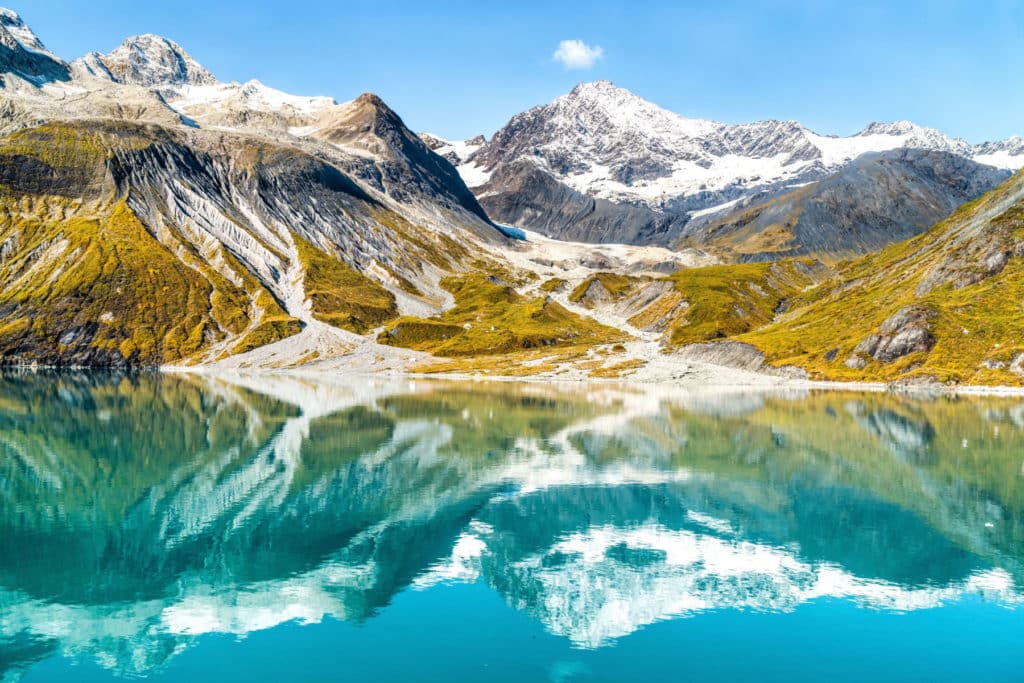
Denali National Park in July
The second most visited national park in Alaska is Denali, home of the tallest mountain in North America. Many know of its previous name, Mount McKinley. Denali stands 20,310 feet tall.
Denali National Park sits four hours north of Anchorage. It can be reached as an excursion on an Anchorage cruise, by rental vehicle, or by tour bus. Beyond its iconic peak, the park offers an unspoiled wilderness of vast tundra, boreal forests, and pristine rivers.
One road leads into the park, and it’s closed at Mile 43 through at least 2026 due to the Pretty Rocks landslide.
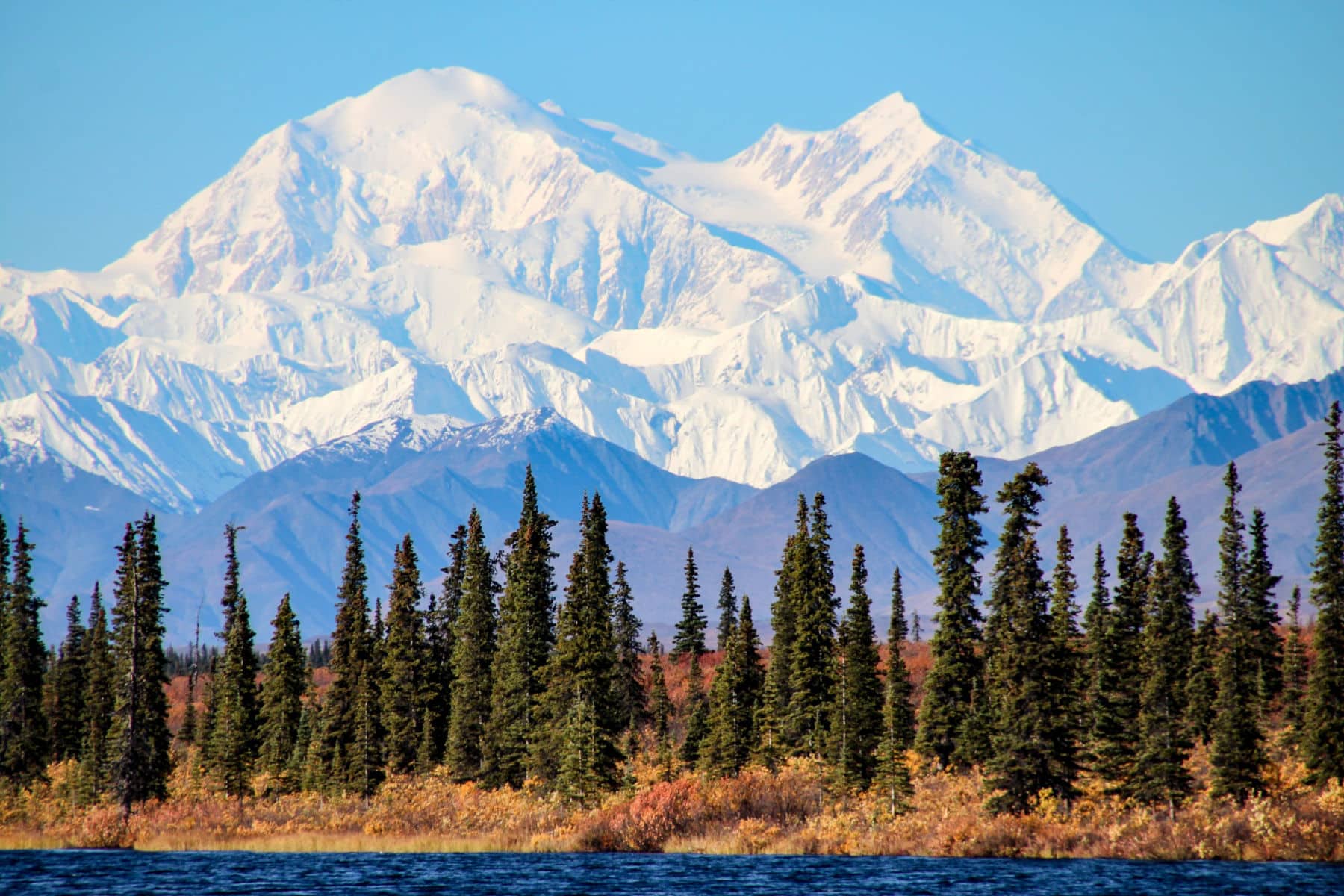
Katmai National Park in July
Home of the famous Fat Bear, Katmai National Park comes with a global following thanks to those cameras. In addition to its famous brown bears, Katmai National Park boasts stunning volcanic landscapes, including the Valley of Ten Thousand Smokes, a desolate and otherworldly terrain formed by a historic volcanic eruption. If you want to see the bears of Brooks Falls, plan for a late July visit. That’s when they start fattening up for winter.
To reach Katmai National Park in southern Alaska, visitors typically rely on air or water transportation due to its remote location without road access.
Commercial airlines offer flights from Anchorage or Homer to nearby towns like King Salmon or Kodiak. From there, travelers arrange floatplane or air taxi services to fly into the park. Alternatively, some visitors may opt for boat transportation, particularly from Kodiak.
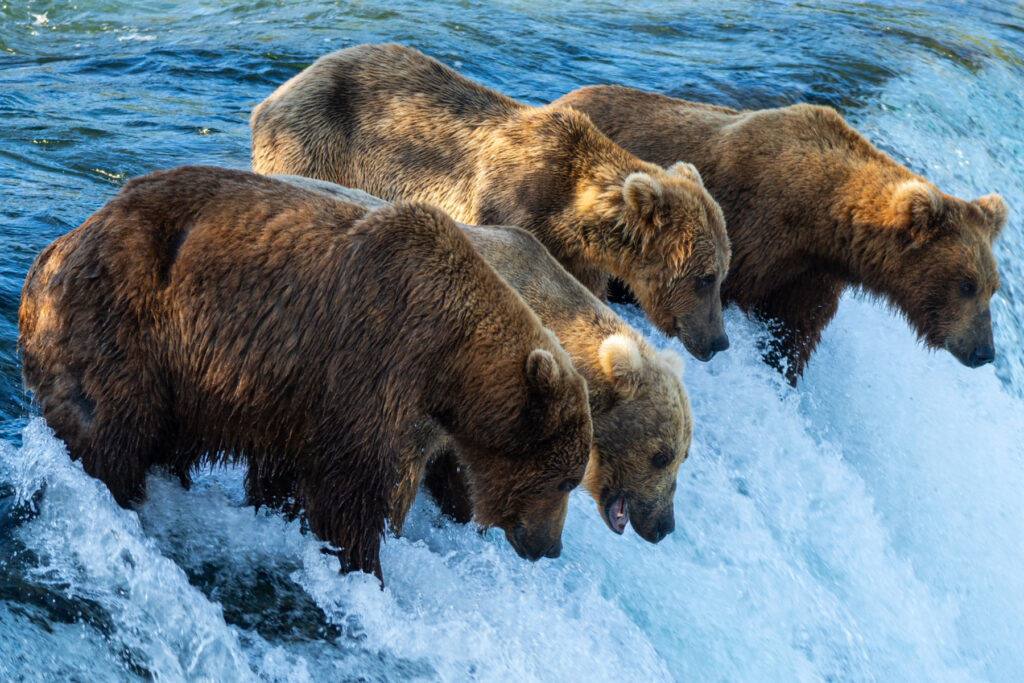
Kenai Fjords National Park
Located near Seward, Kenai Fjords brings an urgency for your visit since Exit Glacier and many others are melting. Ideally, you’ll drive from Anchoring to Seward on the Seward Highway All America Road.
Most activities at Kenai Fjords happen on the water, through boat tours or paddle trips. You can paddle to a backcountry campsite or watch whales while spotting glaciers along the Gulf of Alaska. Its blend of icy fjords, towering mountains, and rich biodiversity makes Kenai Fjords a truly special destination that is changing fast due to climate change.
The one epic trail walks the edge of Exit Glacier to the Harding Icefield viewing location. I wrote my experience on the Harding Icefield Trail if you’d like to have a look. A shorter trail takes you to views of Exit Glacier.
July brings the biggest crowds to Alaska’s third-most-visited national park.
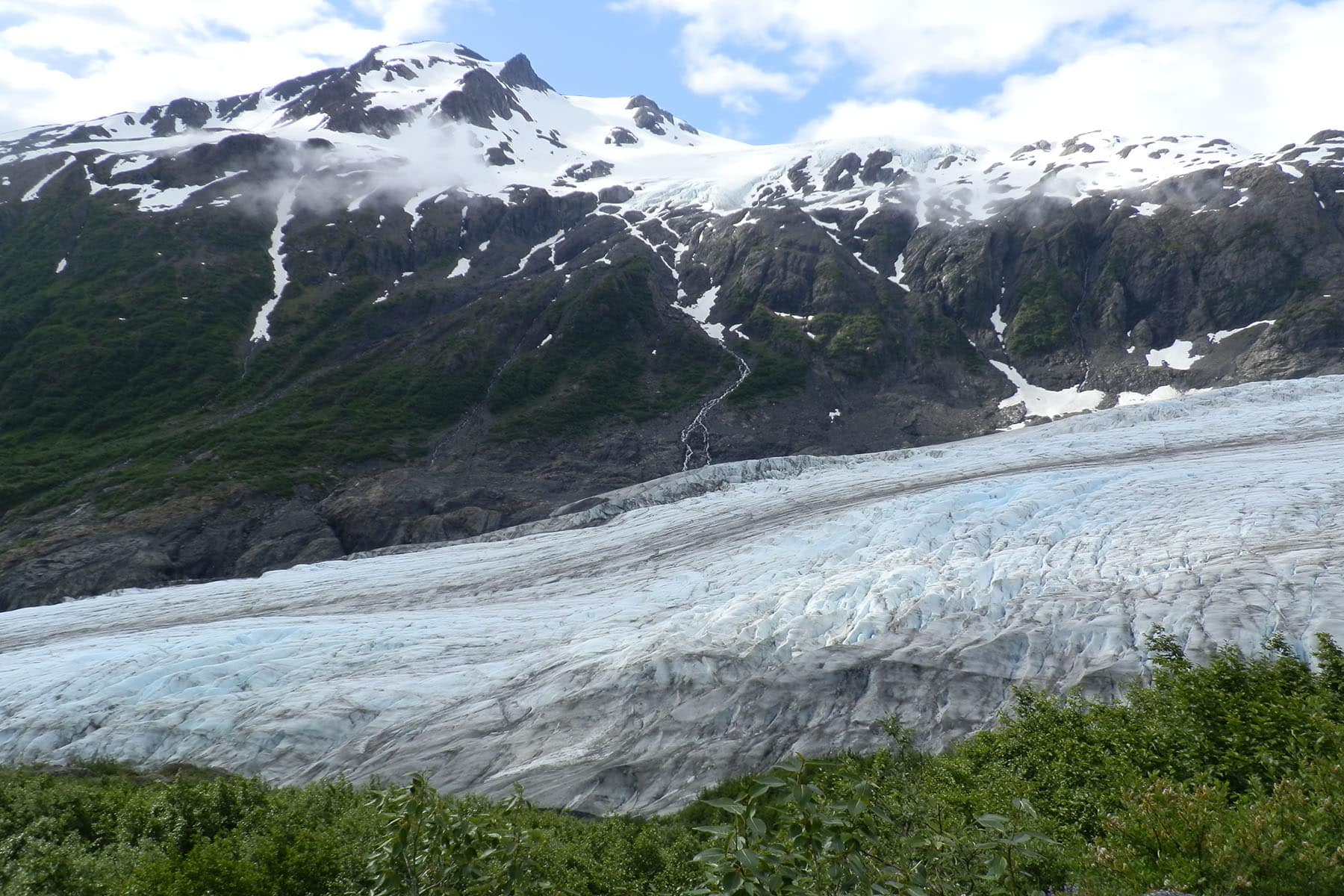
Gates of the Arctic National Park
This remote park is not easy to get to and easy harder to navigaate once you’re there. As pure wilderness, trails don’t exist. The easiest way to get there is a one-hour flight from Fairbanks to the small town of Bettles.
Its vast expanses of rugged mountains, rolling tundra, and winding rivers offer unparalleled opportunities for solitude and exploration. Visitors can experience true wilderness adventure, backpacking through remote valleys, witnessing the Northern Lights, and encountering iconic Arctic wildlife such as caribou and grizzly bears.
Gates of the Arctic regularly ranks as the least visited national park in America, and that’s okay. This place isn’t for your average day hiker. However, for those with more experience under their belt, the trek is worth the effort.
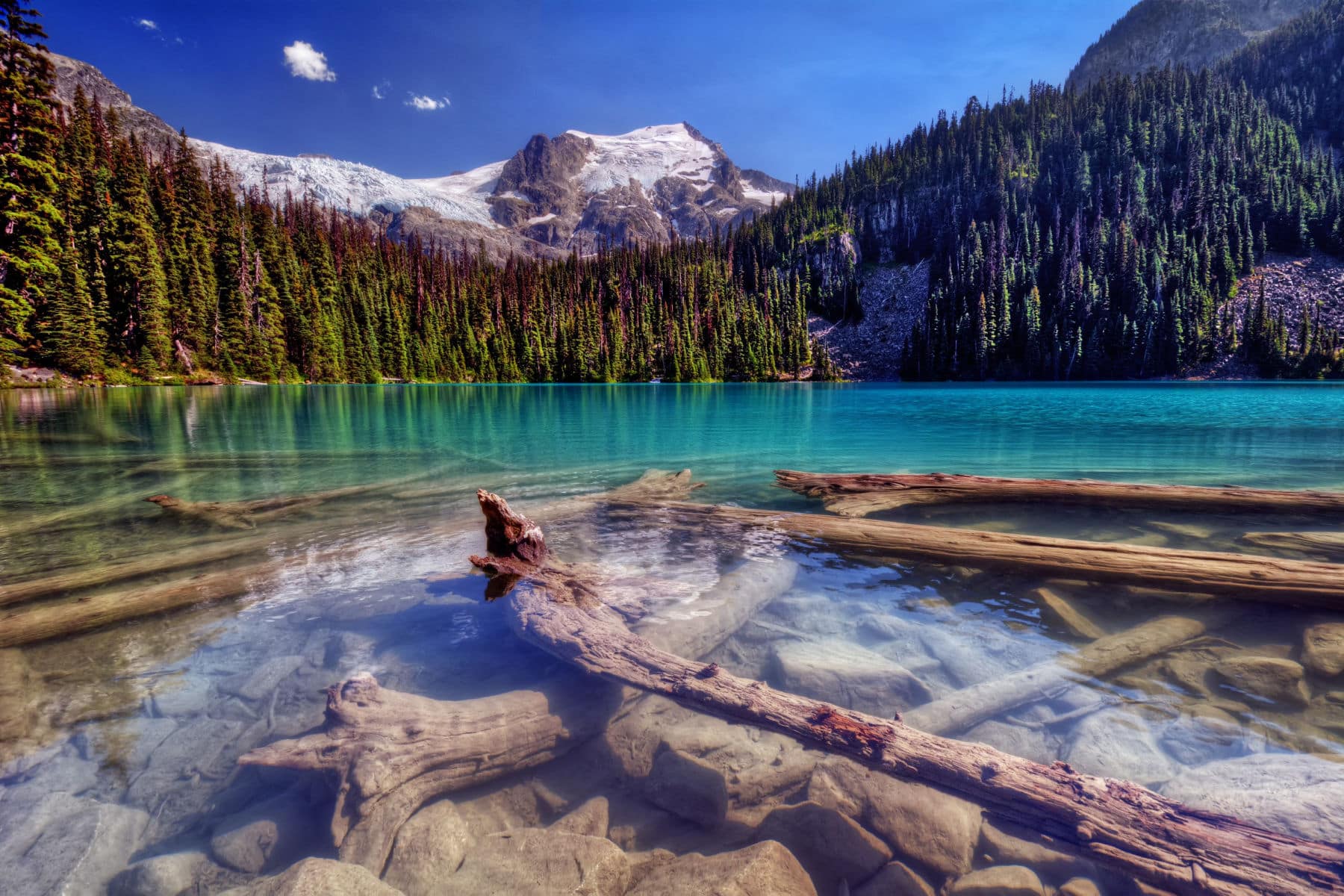
Lake Clark National Park and Preserve
Yet another roadless and flight-required national park in Alaska limits visitors to about 17,000 a year. Lake Clark National Park’s second problem comes with exploring the entire park. You’ll pick which section you want to visit. Should you want to visit a second location, you’ll have to return to the flight base and then board another trip. It’s just not feasible to see all of the park in one trip.
Landing locations include the turquoise waters of Lake Clark, the rugged coastline of Cook Inlet, and the towering peaks of the Chigmit Mountains. If you’re up for the adventure, one of the best locations is the Priest Rock Cabin on Lack Clark. Experienced paddlers can cross the lake from Port Alsworth to get there.

Wrangell-St. Elias National Park and Preserve
It’s important to note that Wrangell St. Elias National Park is the largest in the US at over 13 million acres – that’s the size of 25 Great Smoky Mountains or six Yellowstones. Plus, the park features 9 of the 16 tallest mountain peaks in the country. About 78,000 people visited in 2023.
Driving to this park is an option, but plan to spend seven hours on the road from Anchoring to Kennecot, where the park is located. Flightseeing or backcountry plane rides are another option, but those costs add up quickly.
Wrangell St. Elias houses four mountain ranges, one of the most active volcanos on the continent, and includes a Glacier larger than Rhode Island. July brings endless views of wildflowers and berries ripe for picking. Be sure to see the picturesque and history-filled Kennecott Mines National Historic Landmark.

List of Best National Parks to Visit in July
- Indiana Dunes National Park
- Lassen Volcanic National Park
- Great Basin National Park
- Wind Cave National Park
- Redwood National Park
- Black Canyon of the Gunnison National Park
- Theodore Roosevelt National Park
- Mount Rainier National Park
- Kings Canyon National Park
- Glacier National Park
- Olympic National Park
- Grand Teton National Park
- Bryce Canyon National Park
- Crater Lake National Park
- North Cascades National Park
Map of Best National Parks to Visit in July
Pin 15 Best National Parks in July
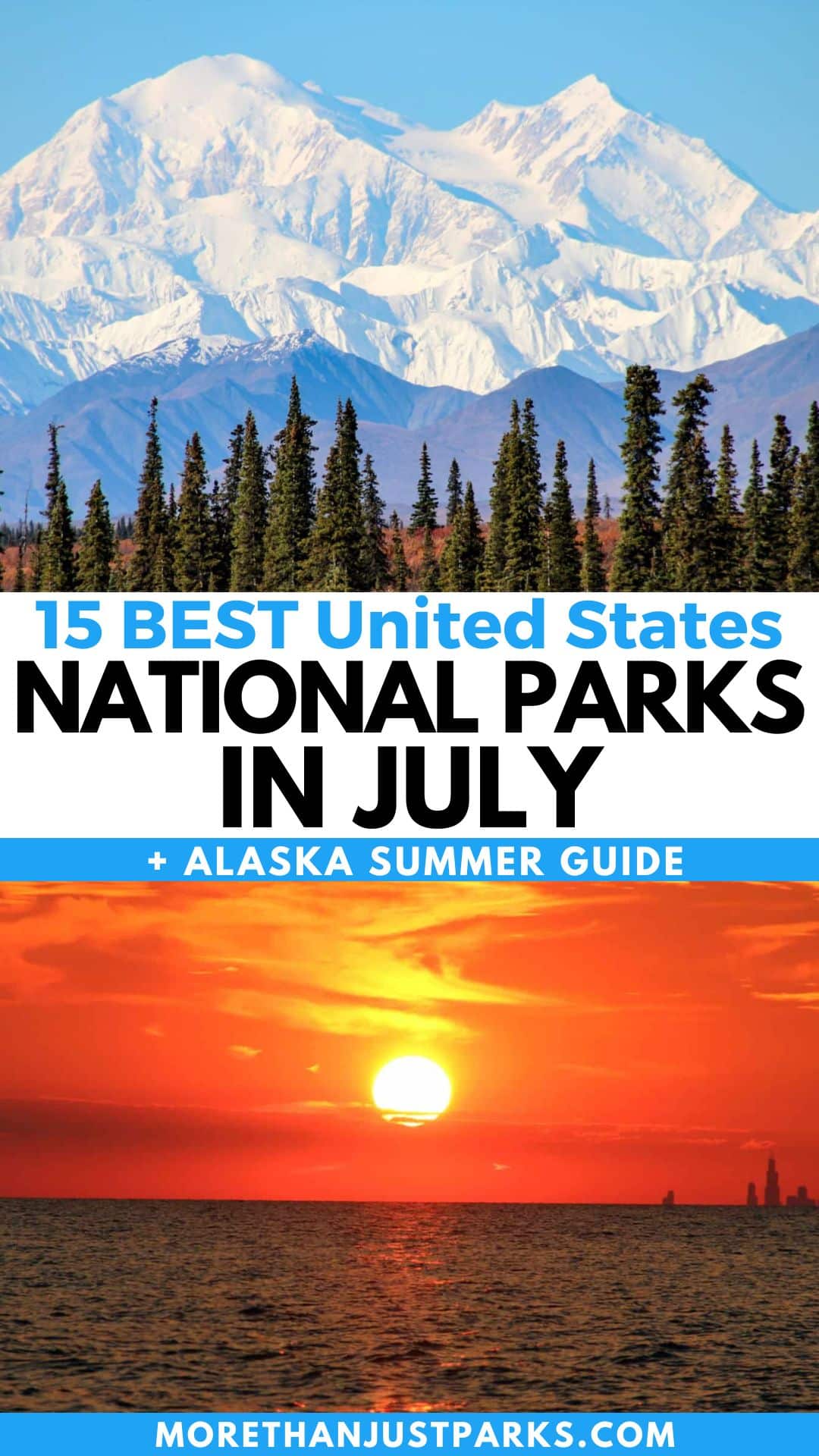
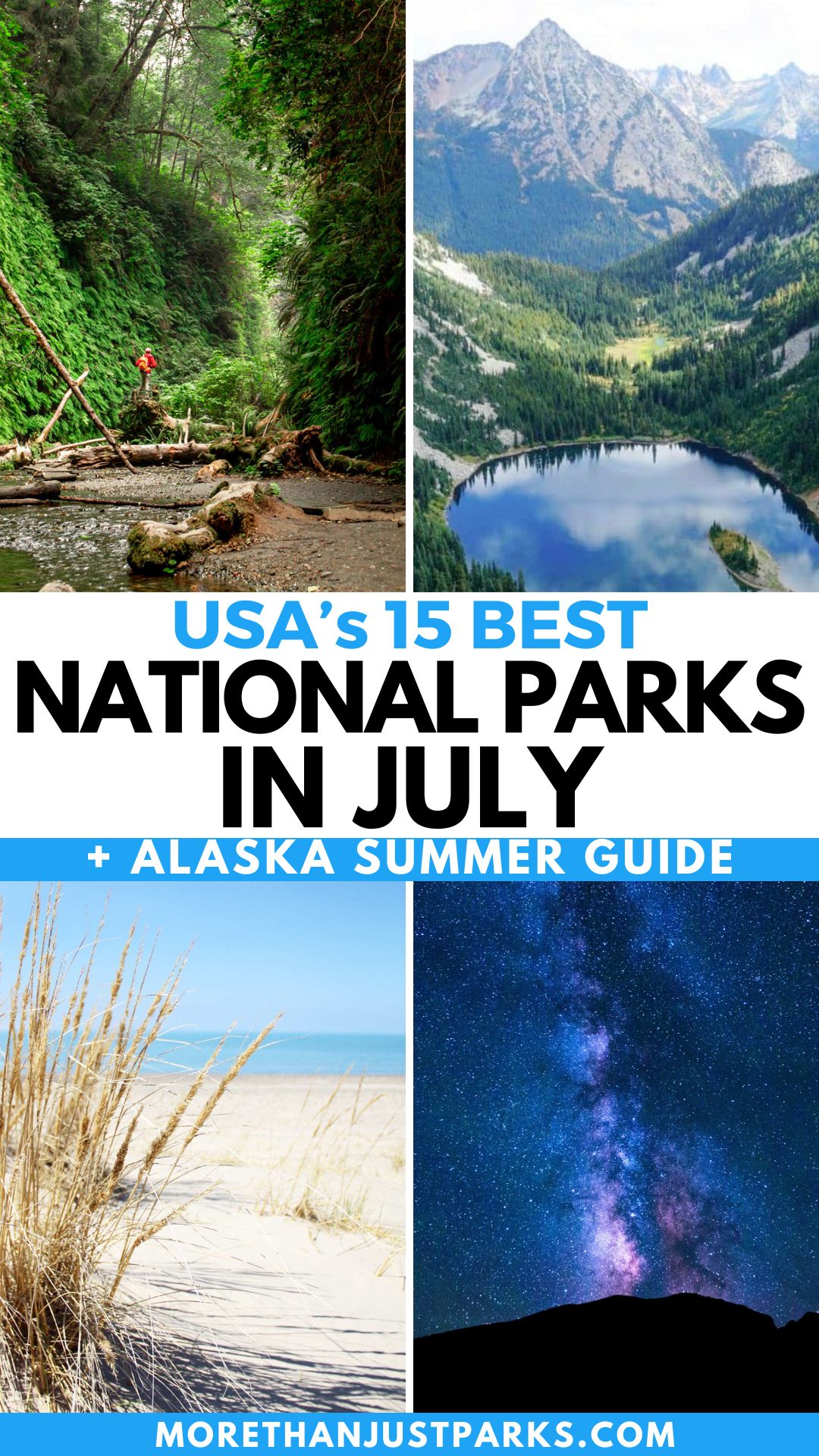
Helpful Related Links
January: 10 Best National Parks To Visit in January
February: 15 BEST National Parks to Visit in February (From Snow to Tropical)
March: 15 BEST National Parks to Visit in March
April: 15 EPIC National Parks to Visit in April
May: 15 BEST US National Parks to Visit in MAY (+2 Parks to Avoid!) 2023
June: 15 BEST National Parks to Visit in June (+EPIC June Road Trips)
October: 15 BEST National Parks to Visit in October (+ 3 to Avoid)
November: 15 BEST National Parks to Visit in November (+Holiday Hours)
December: 15 Best National Parks to Visit in December (+2 to Avoid!)
Most Visited National Parks in 2023: 10 Most & Least Visited National Parks in 2023
Best National Parks Ranked: ALL 63 US NATIONAL PARKS RANKED By Experts
List of National Monuments: Ultimate List of National Monuments (Alphabetical + By State)
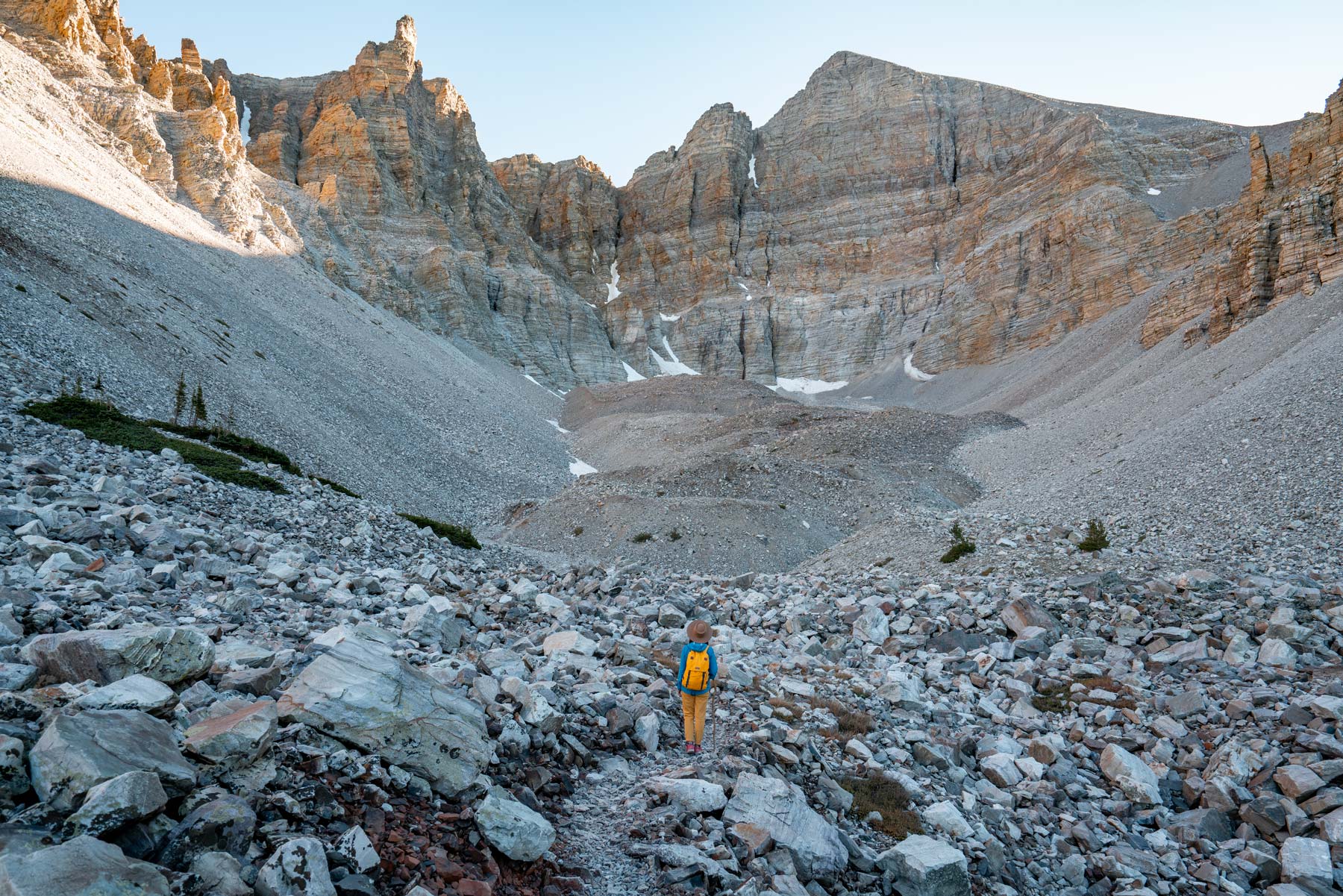
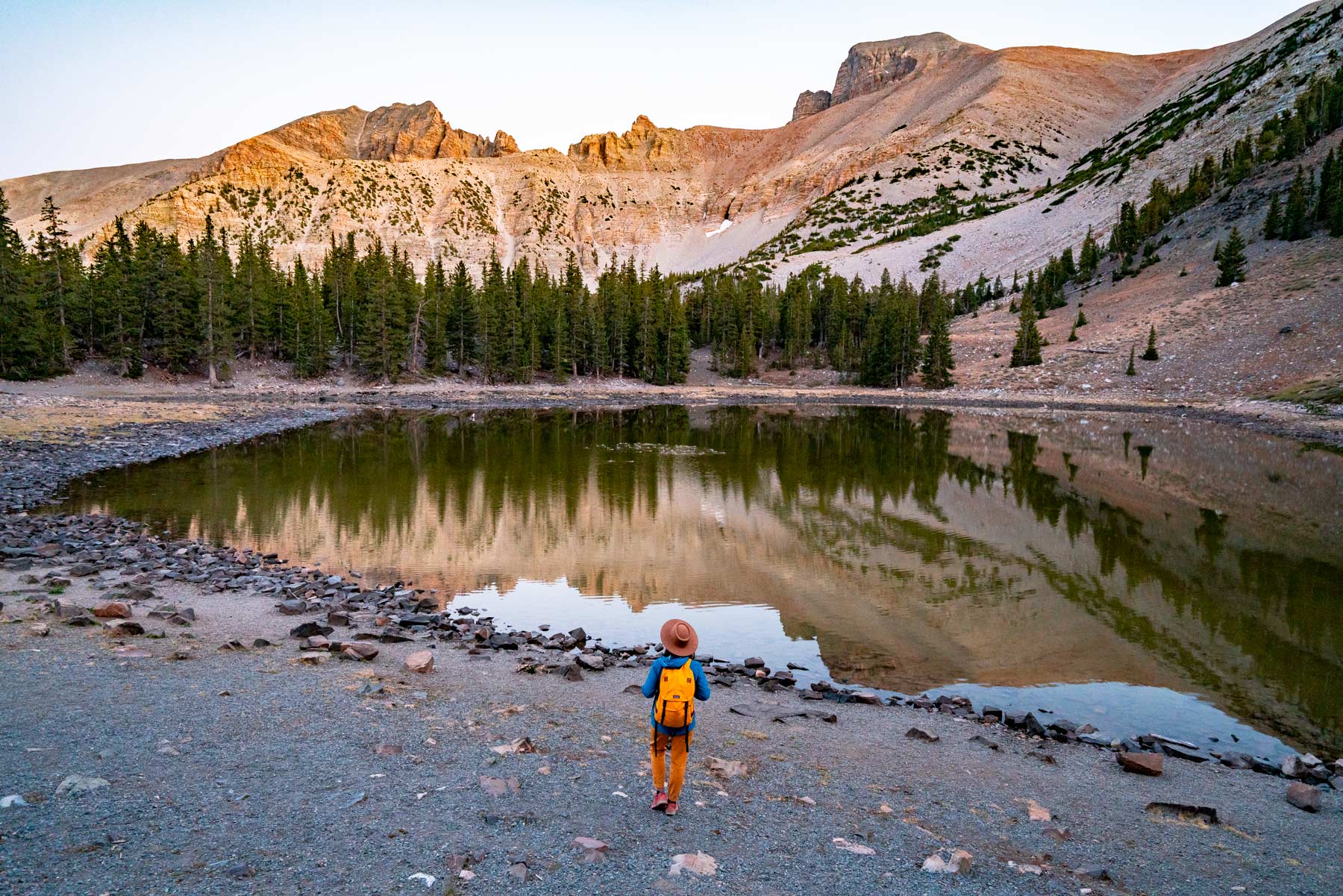

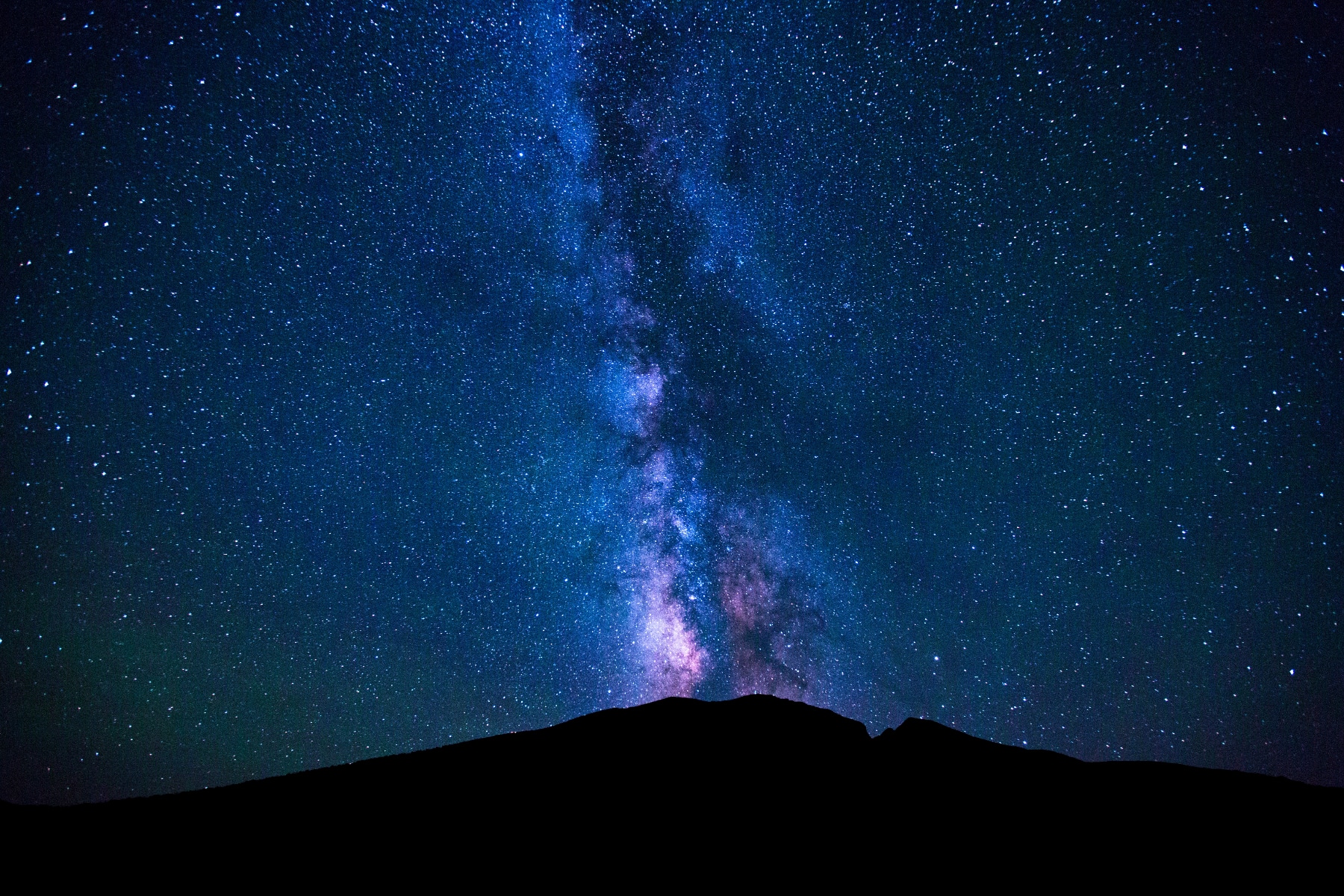
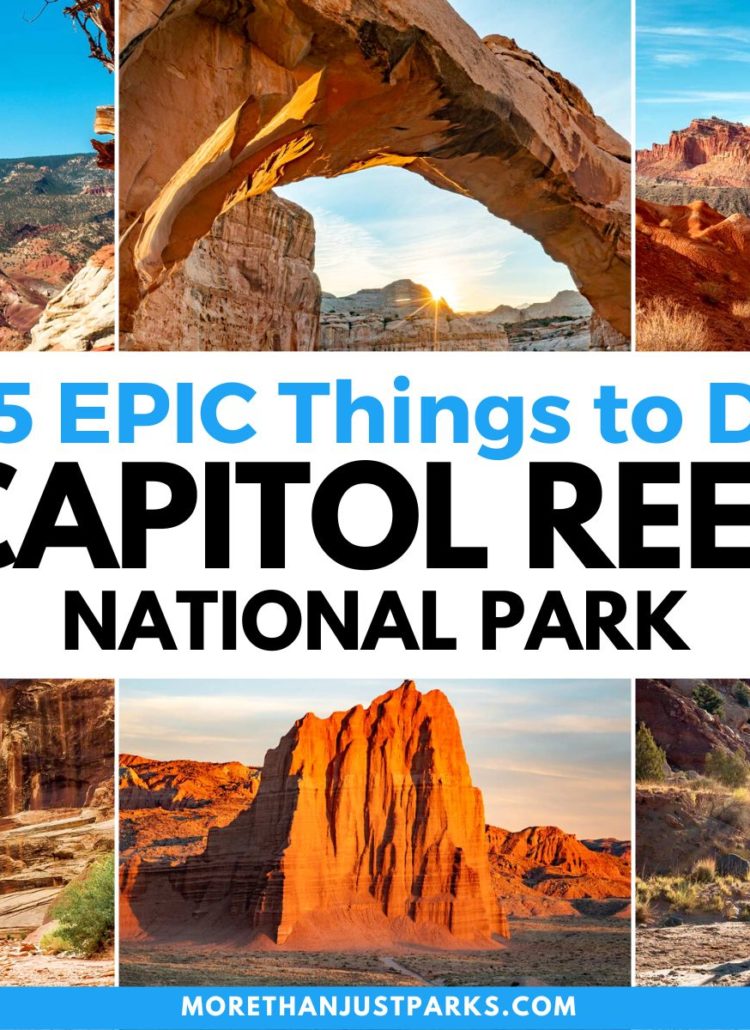

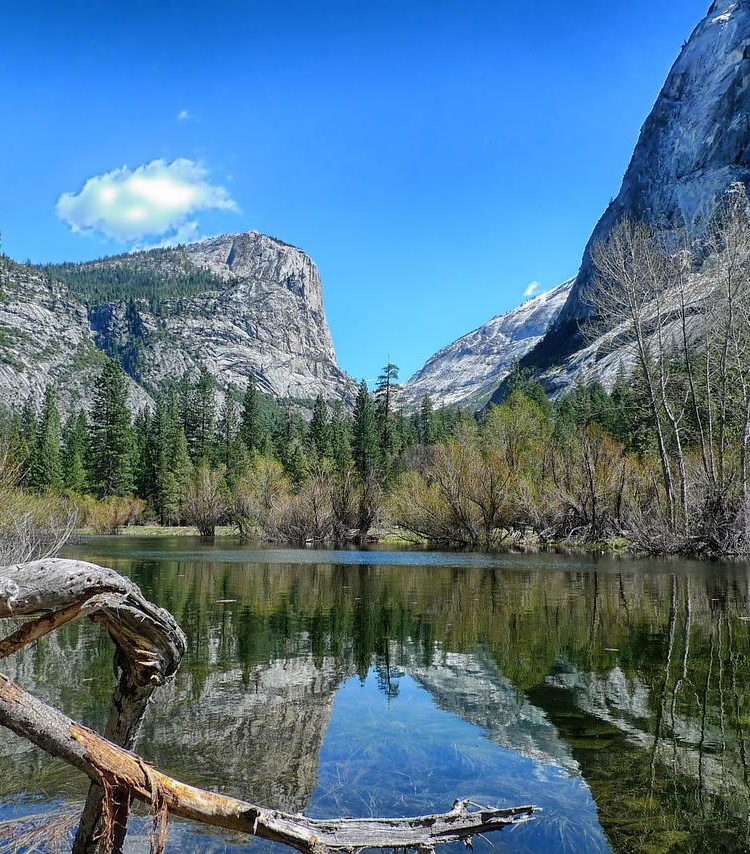
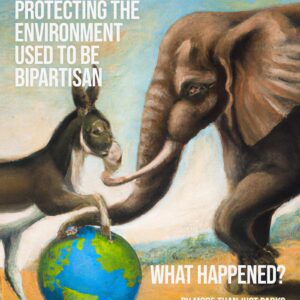

Nailed it again, Jennifer. These lists are lit.